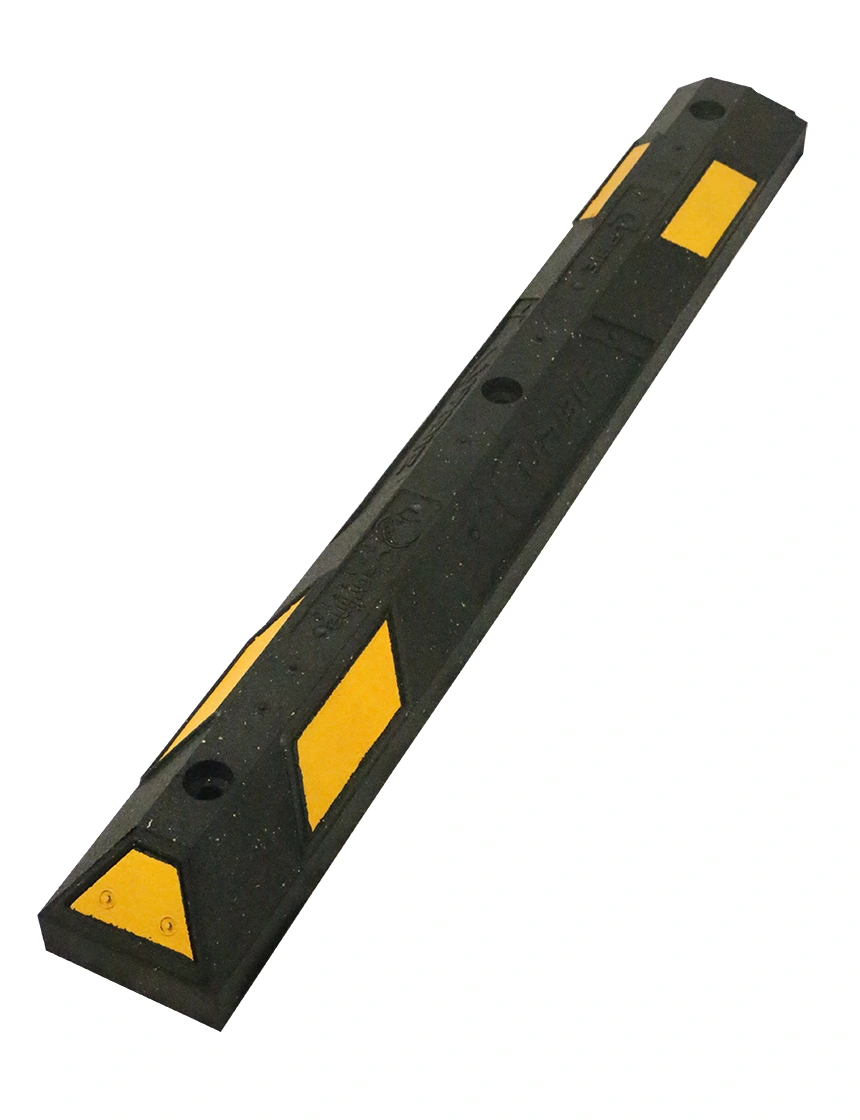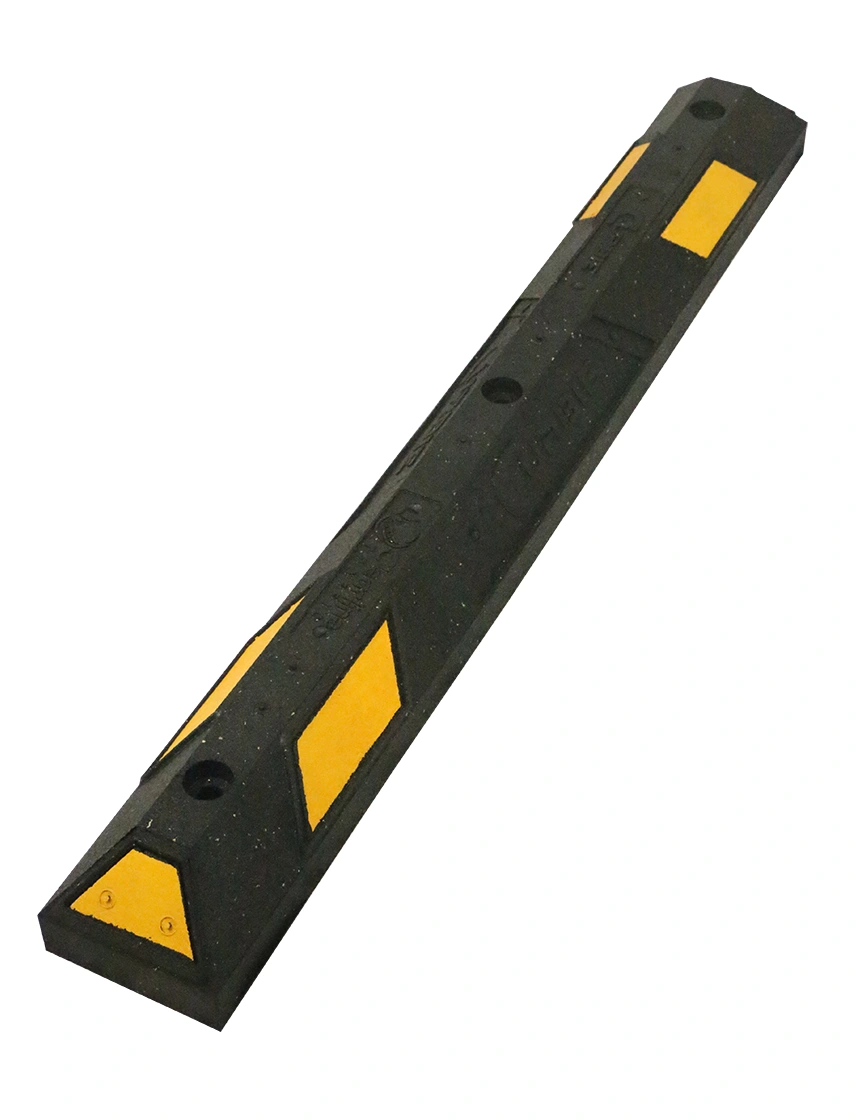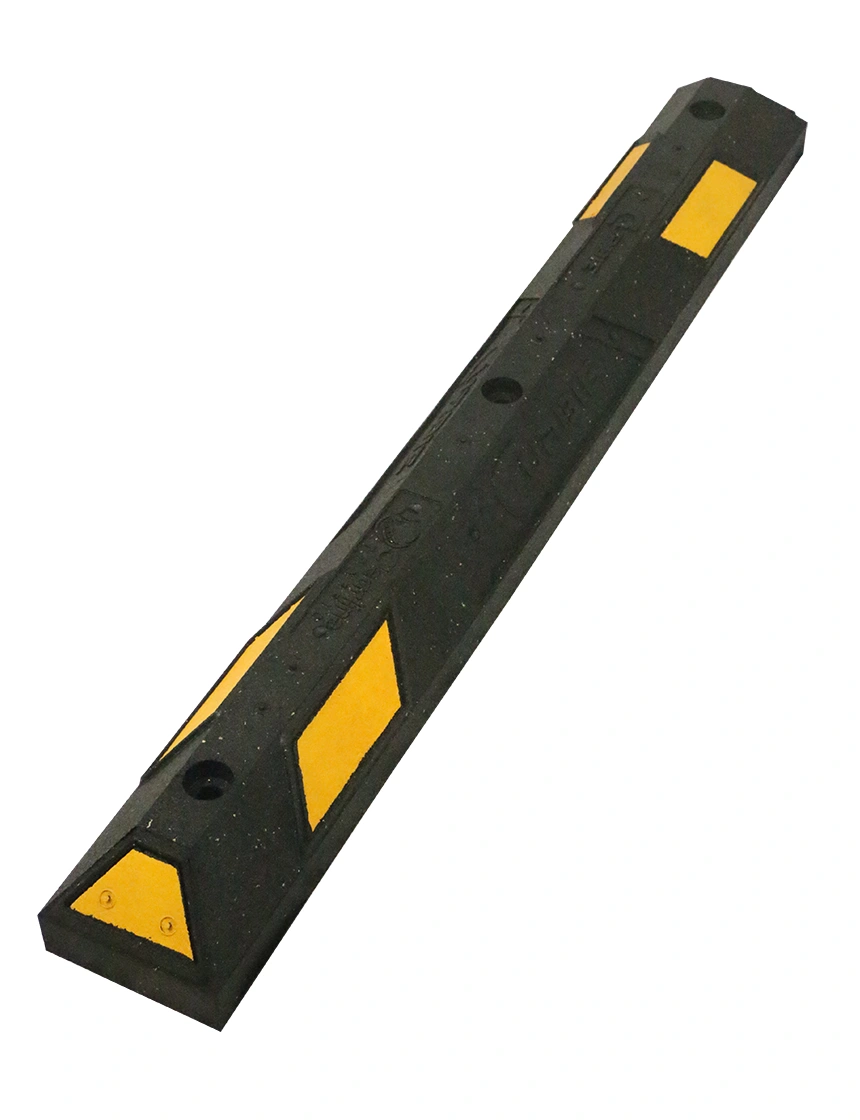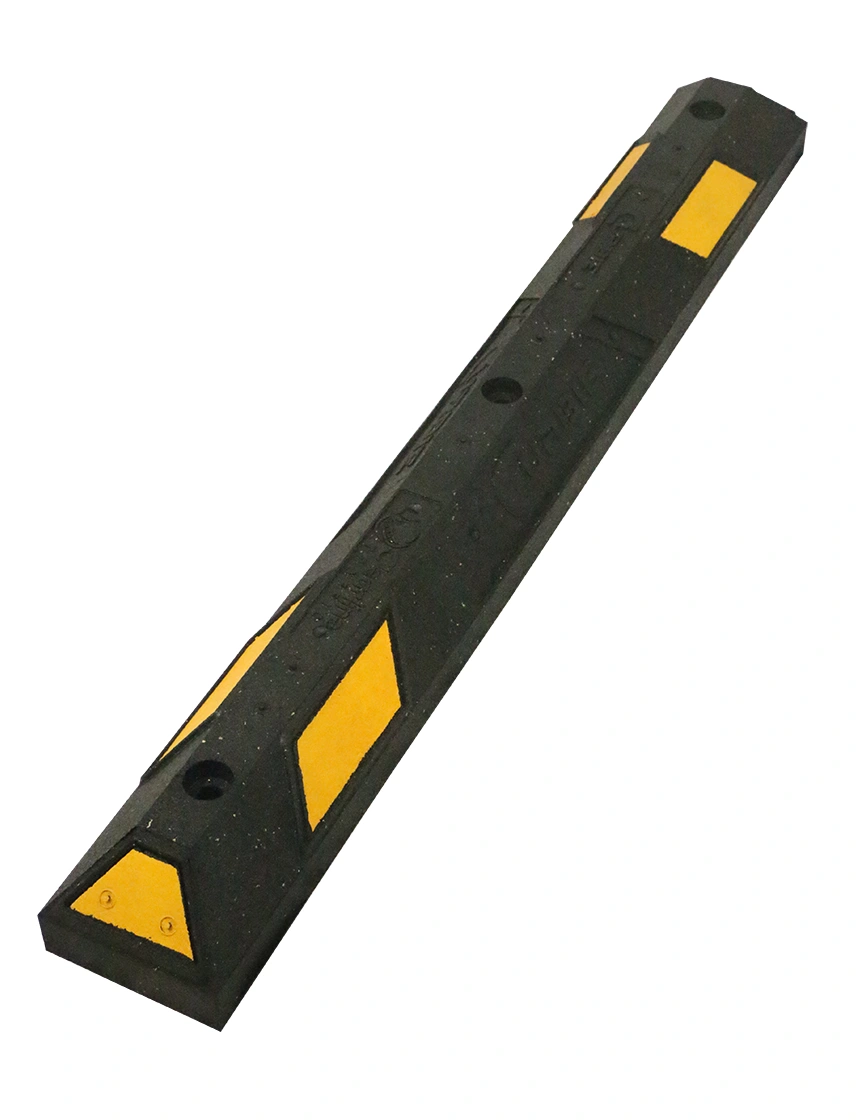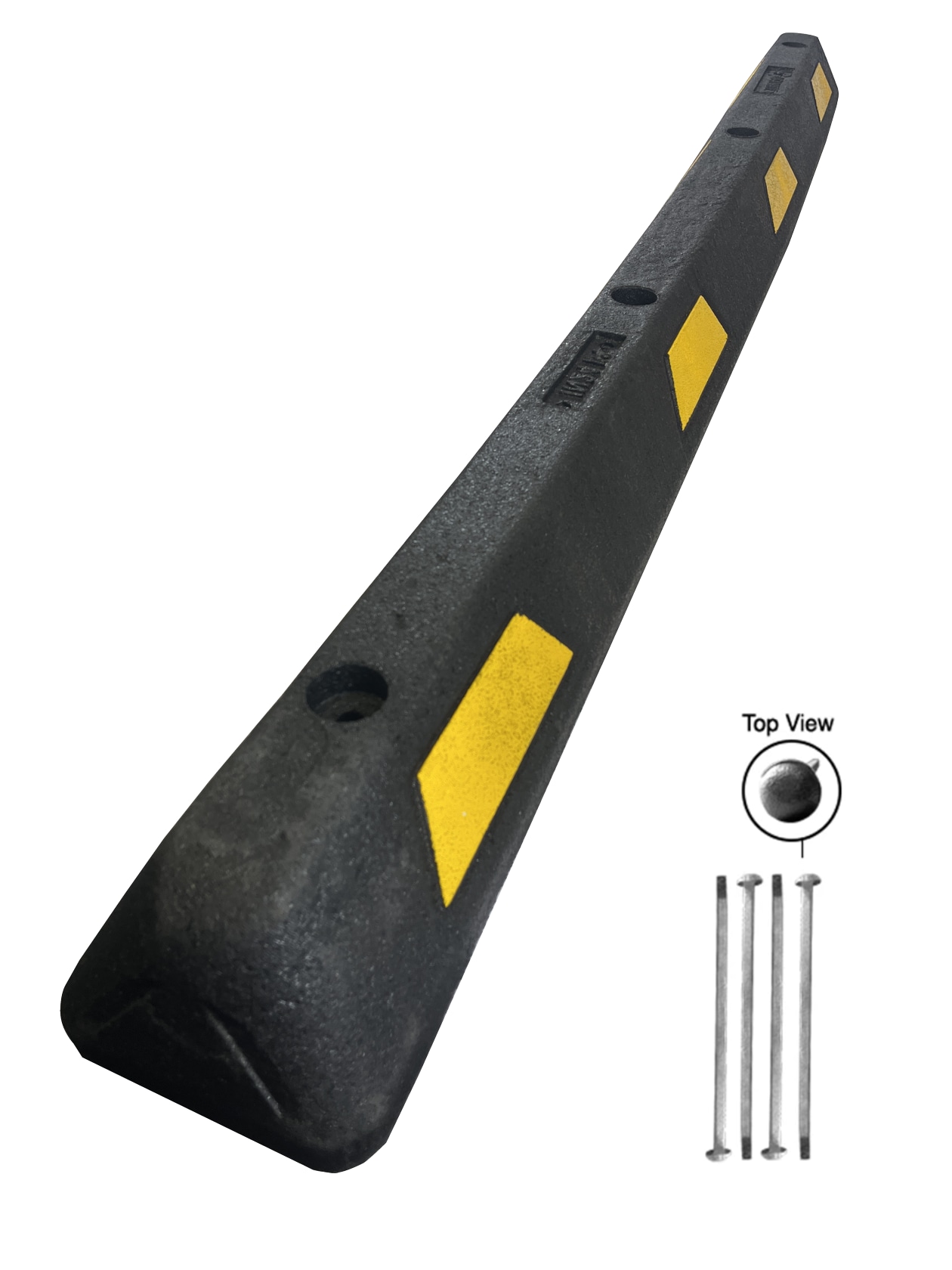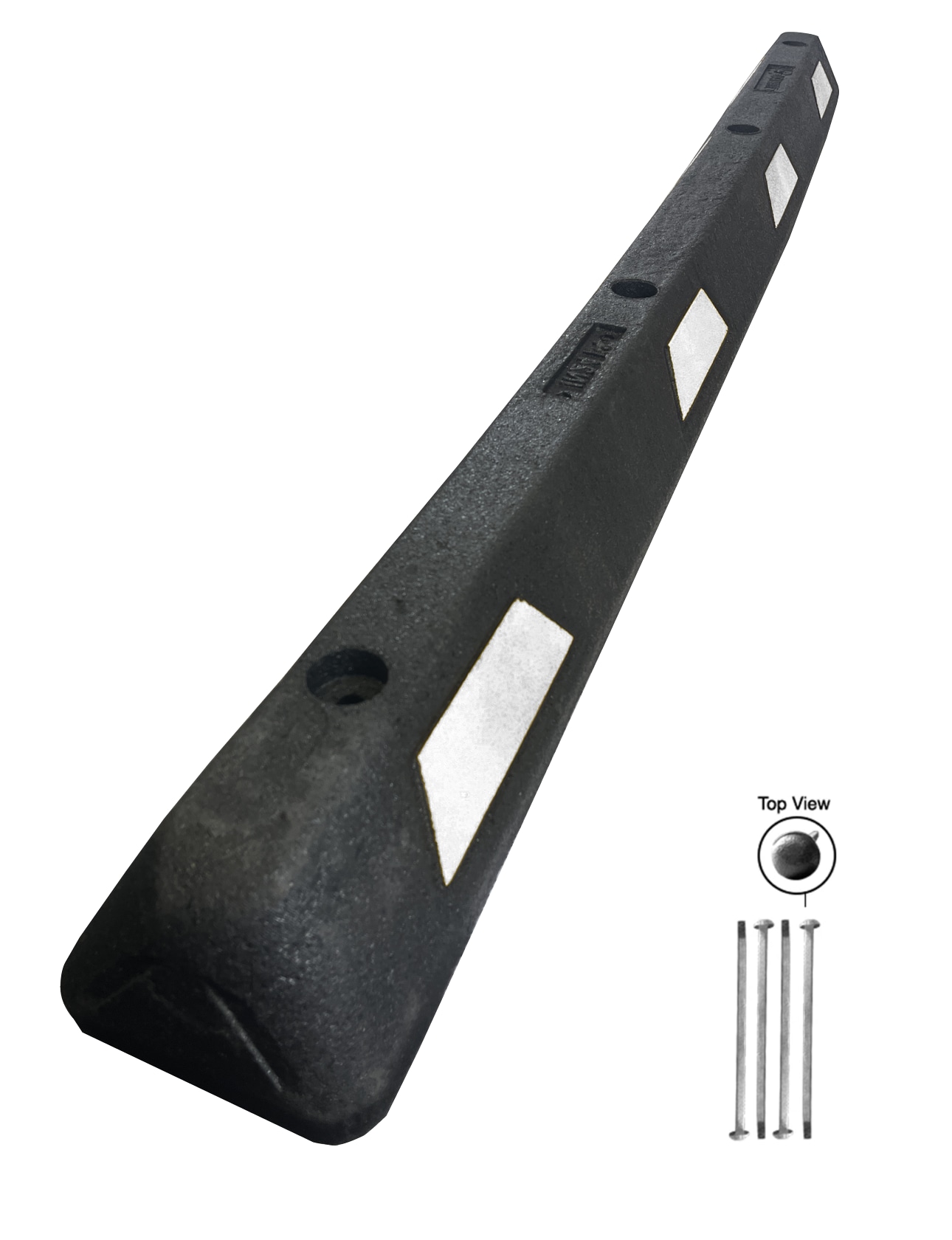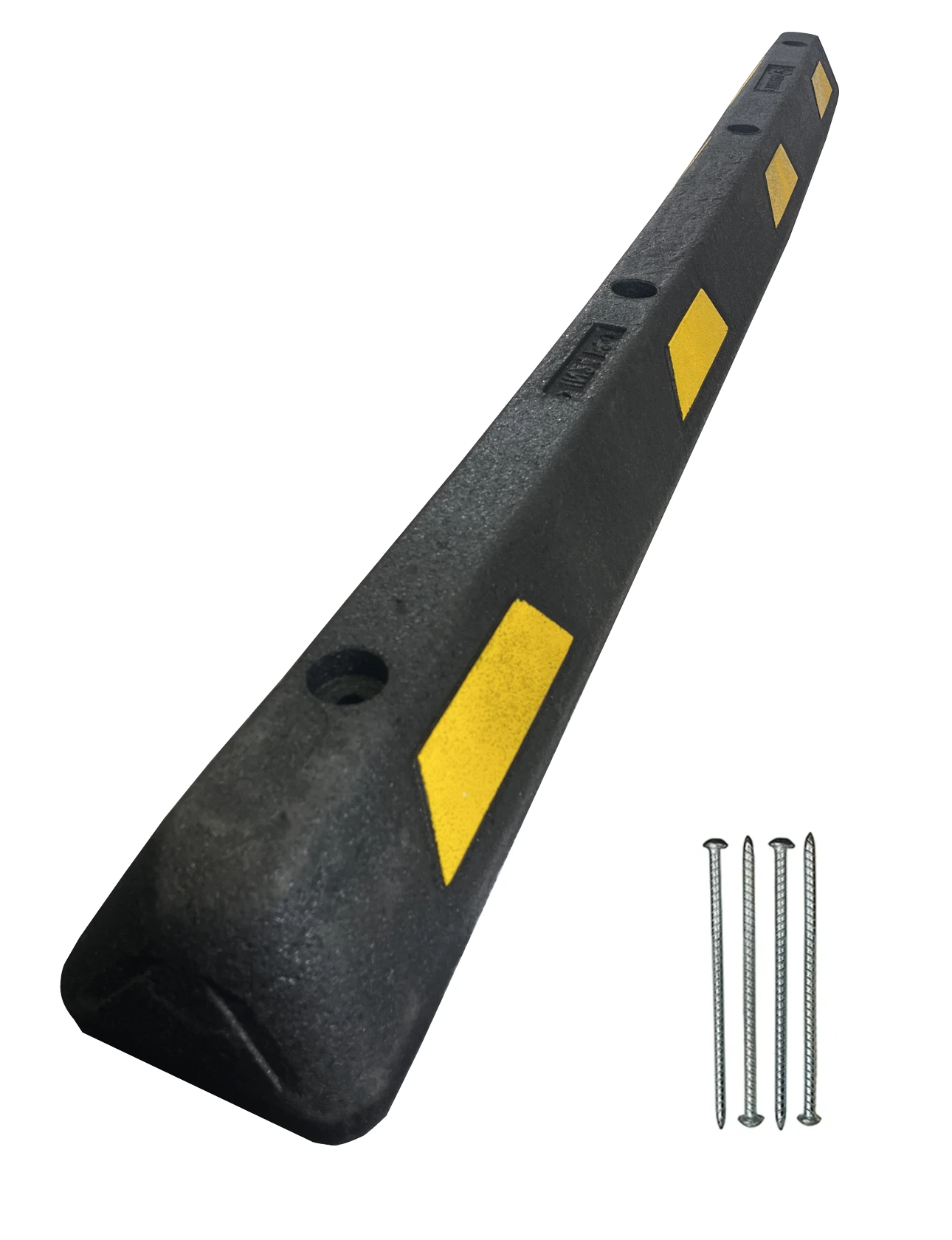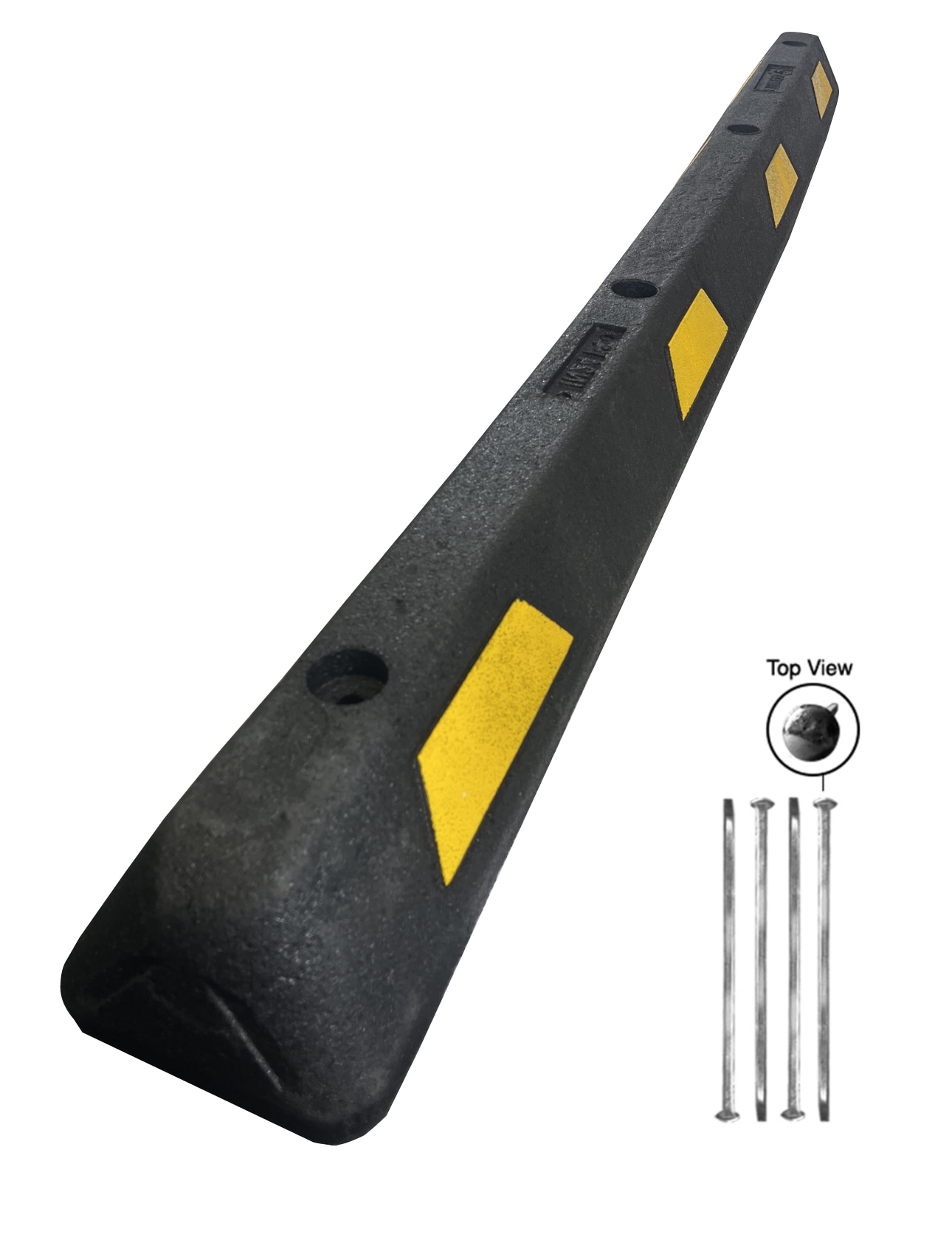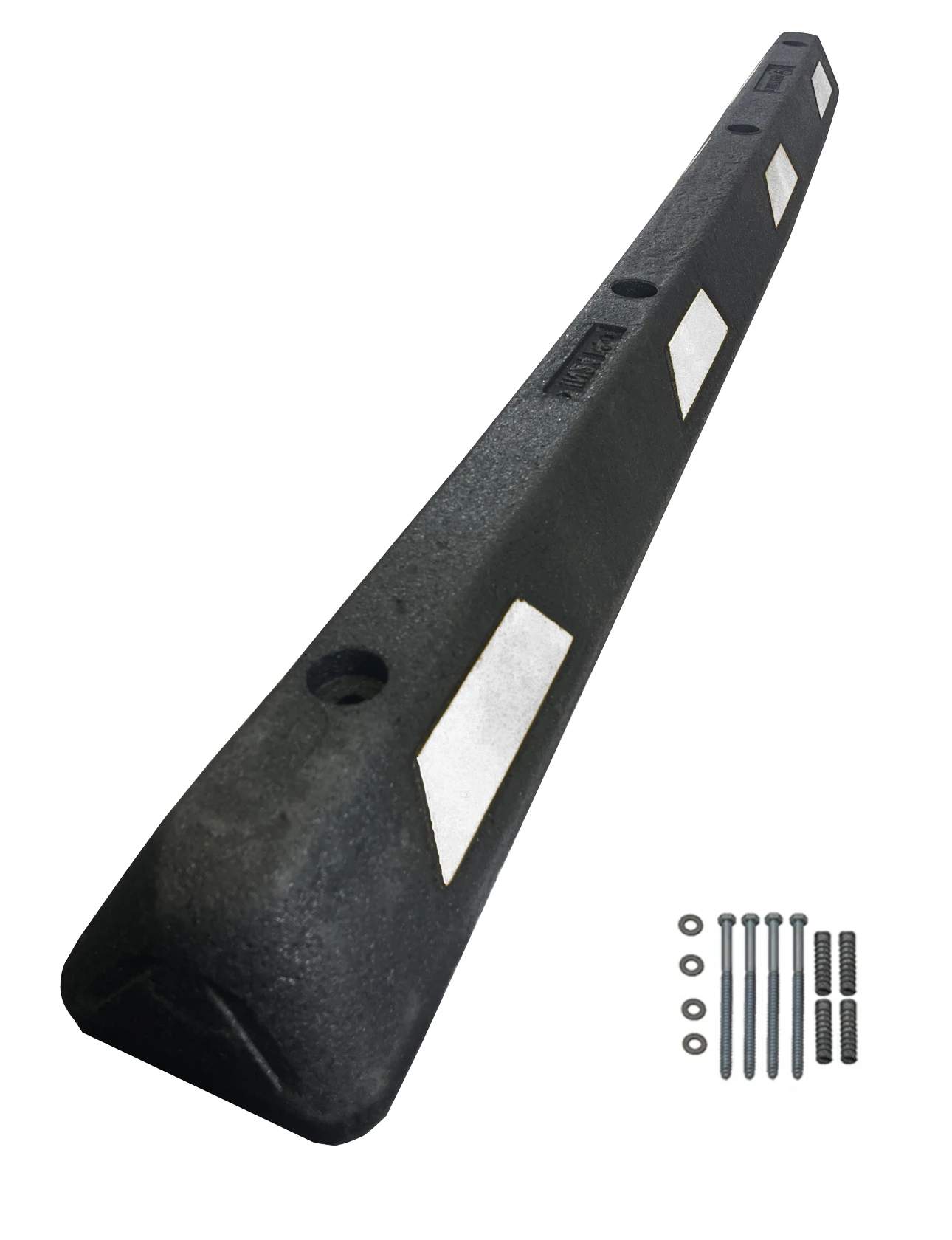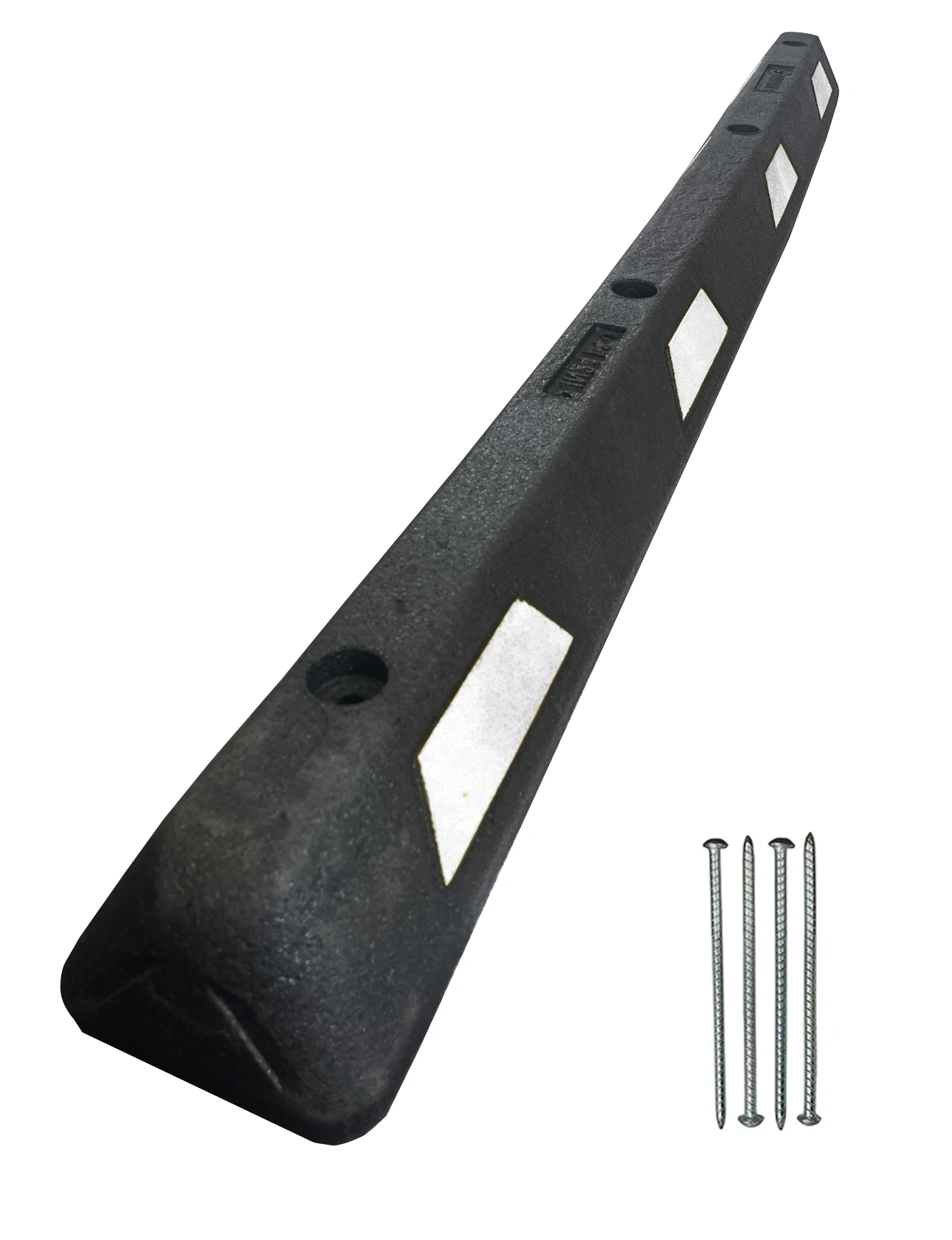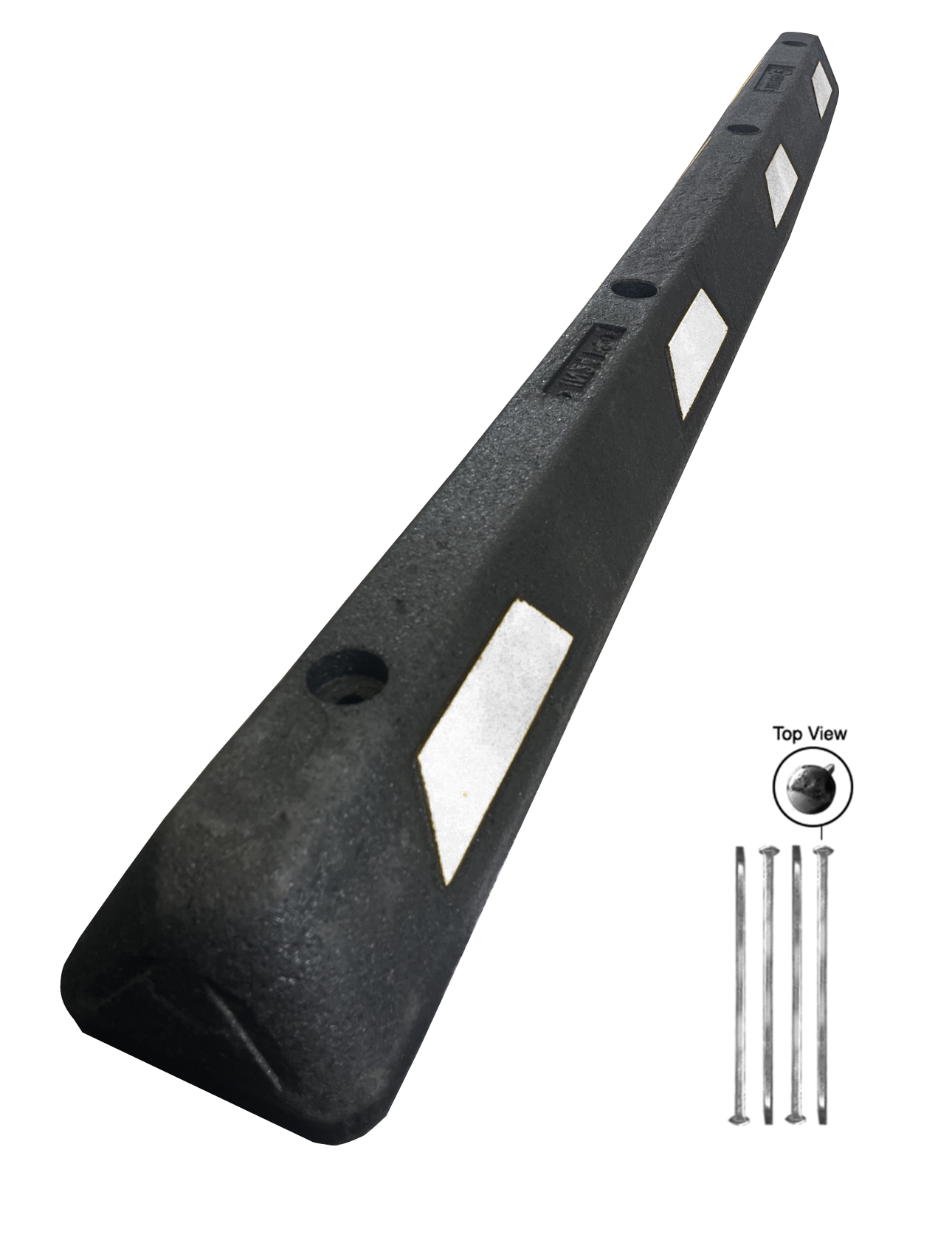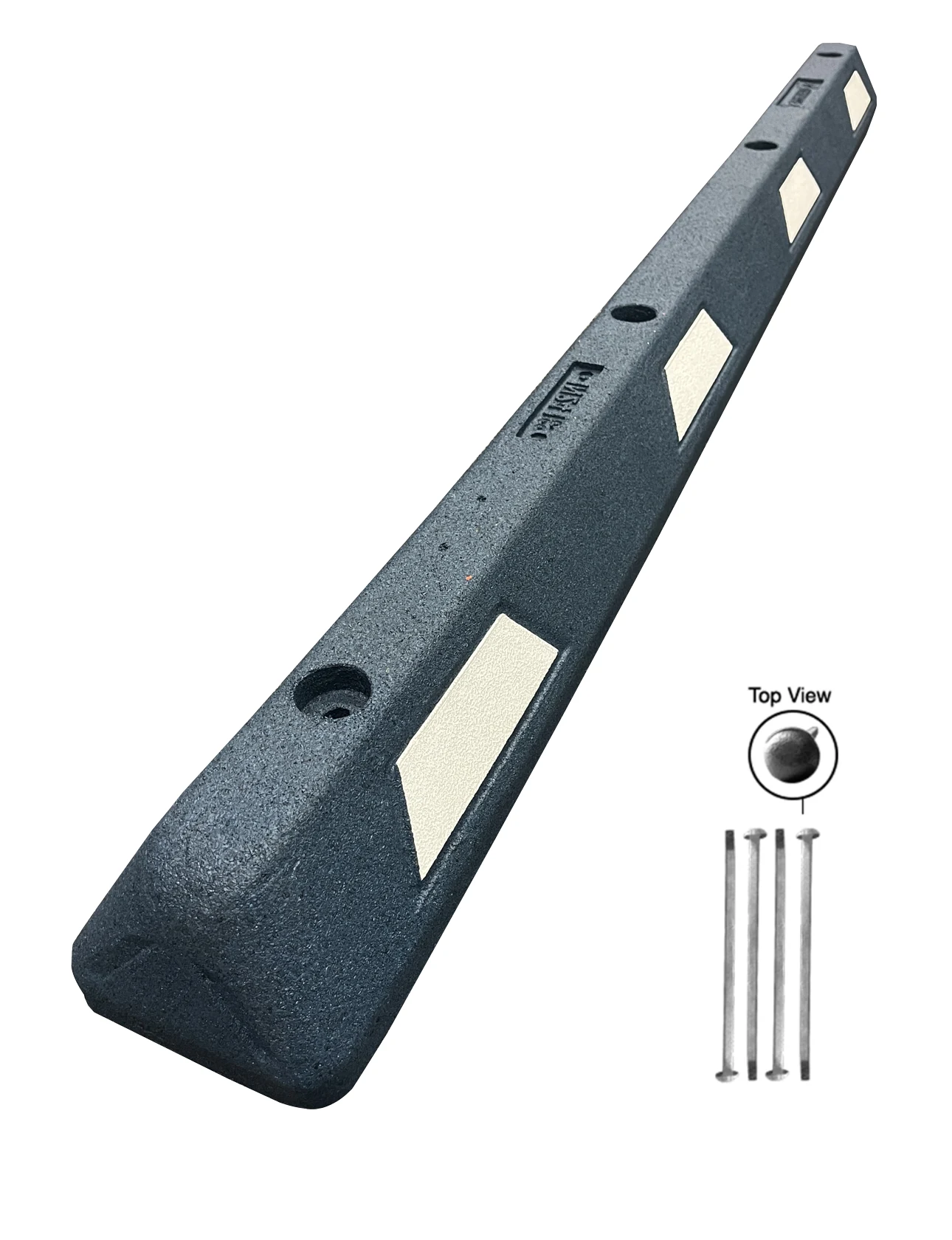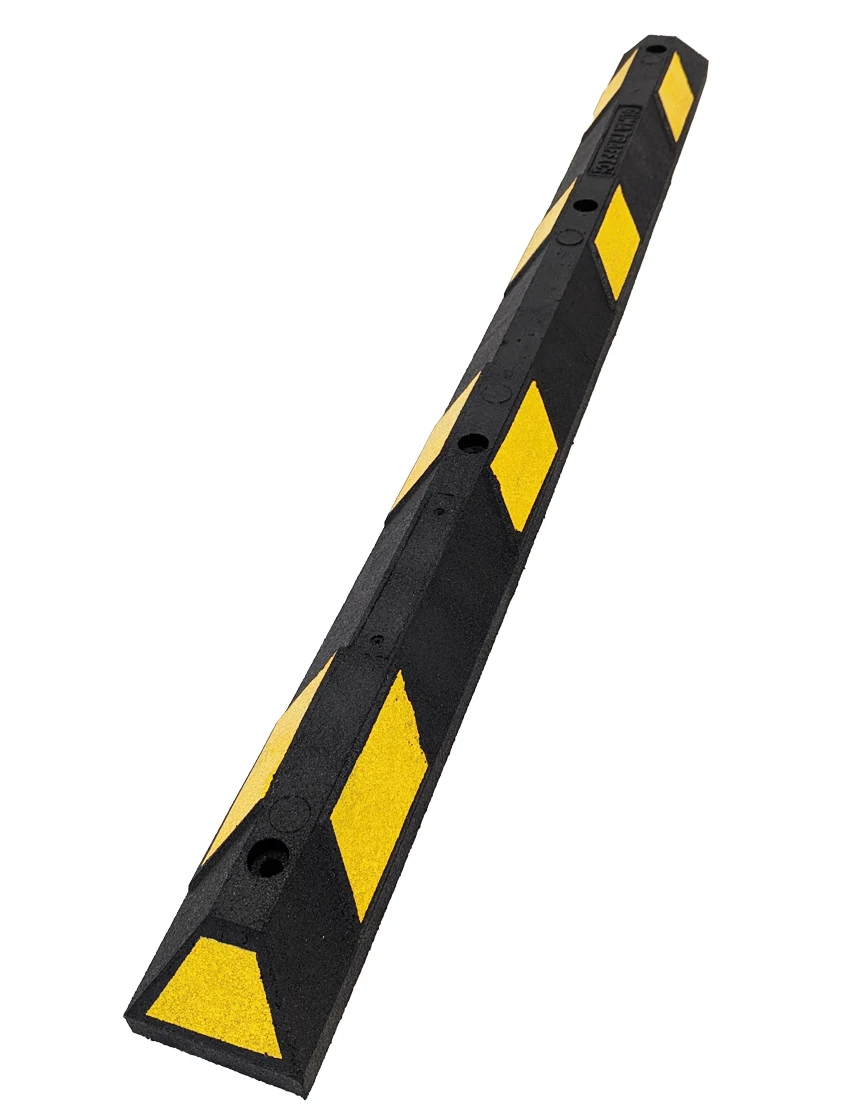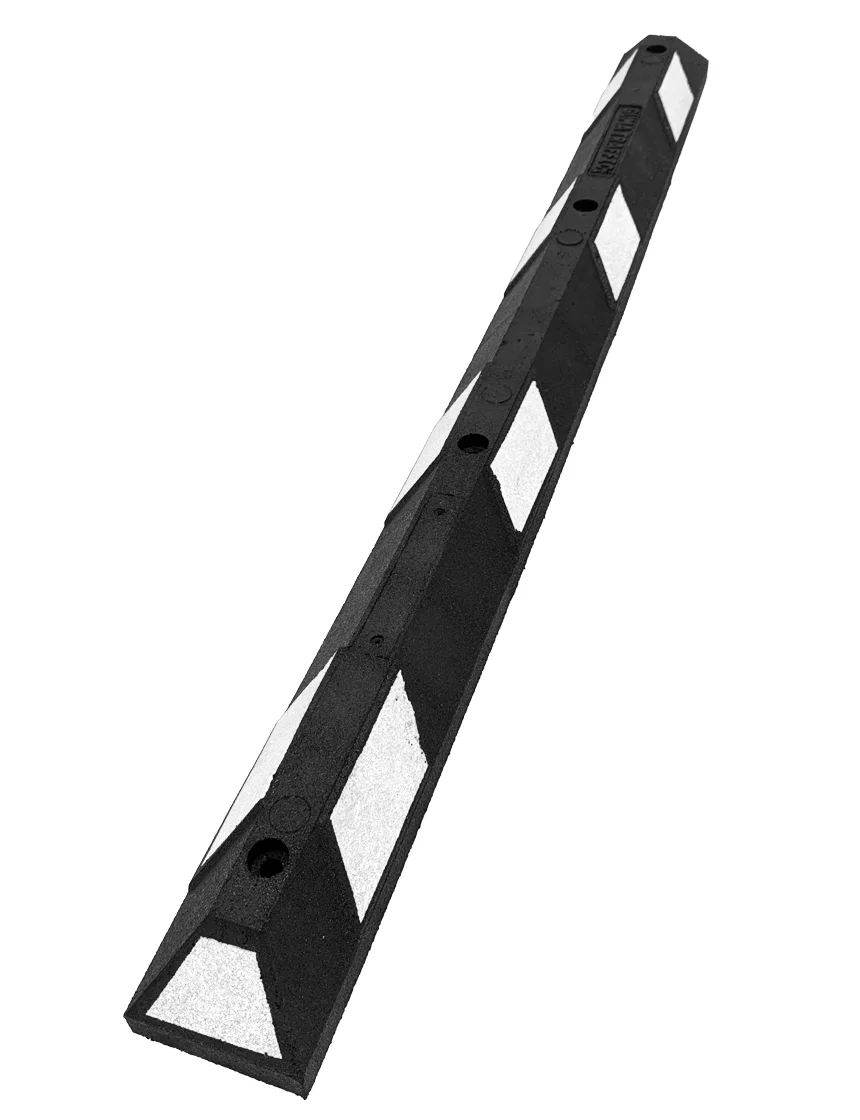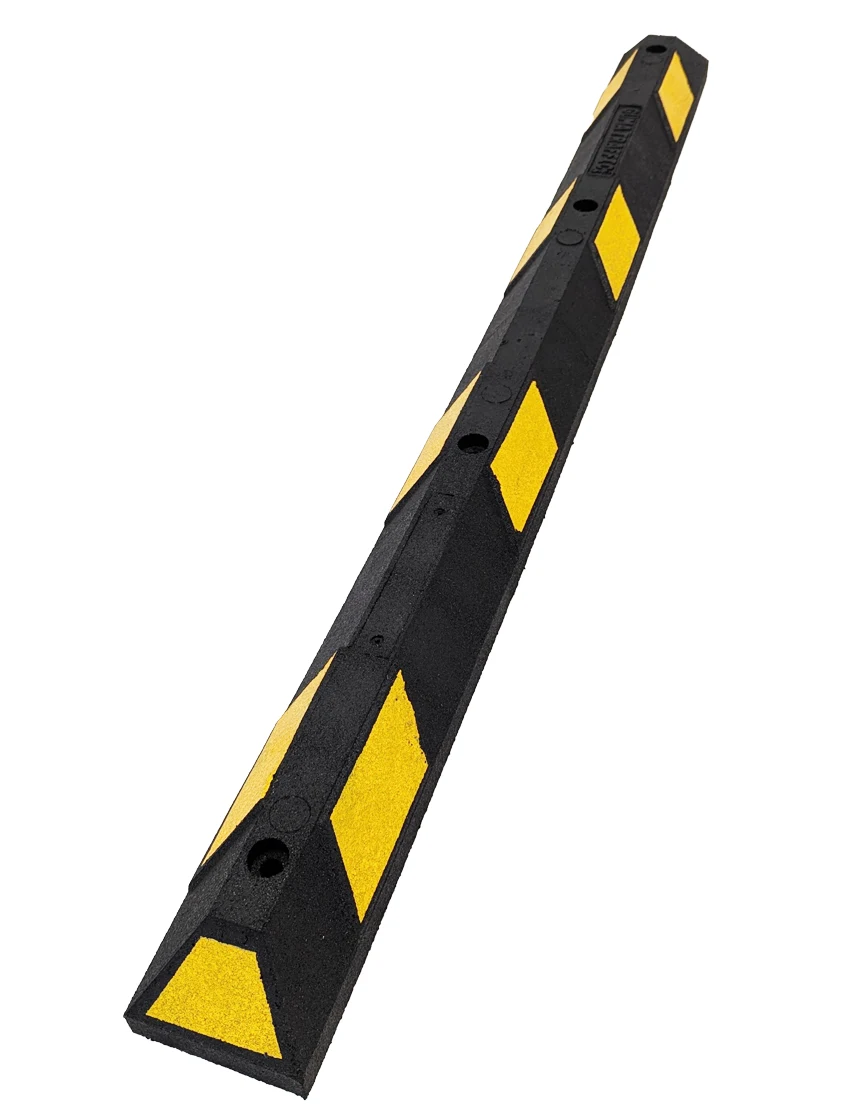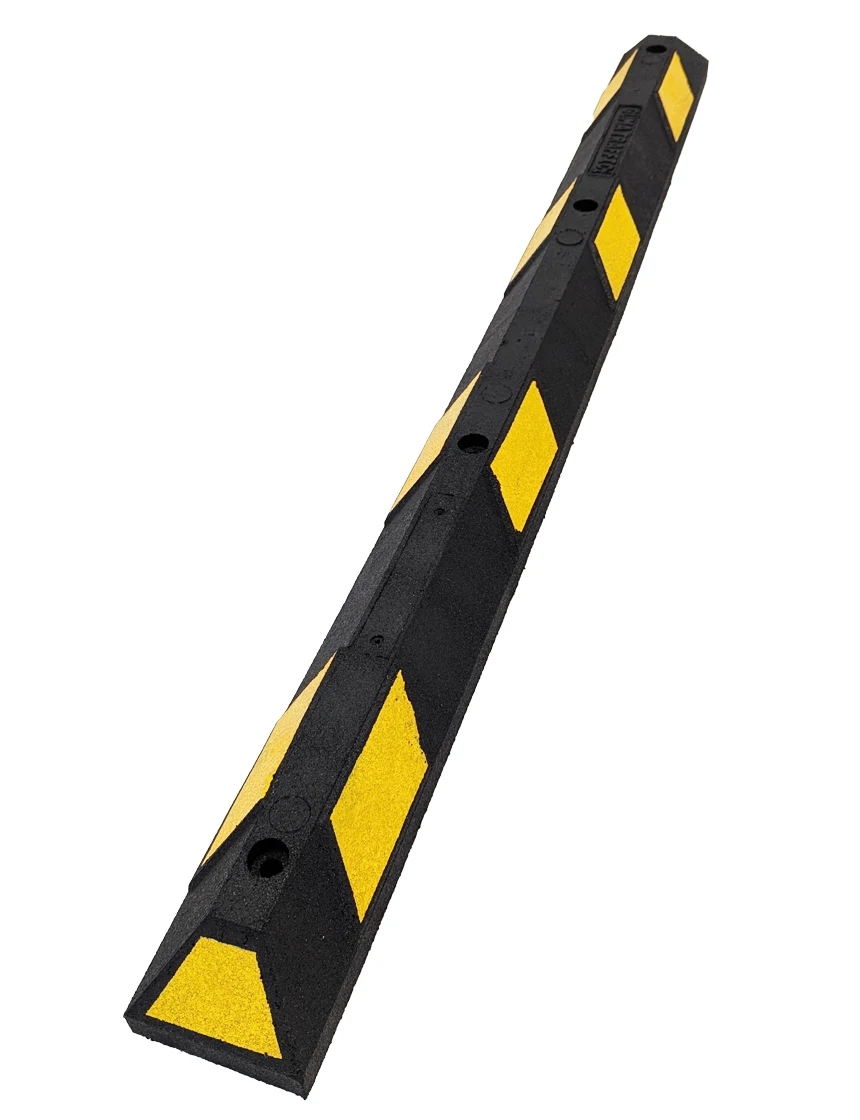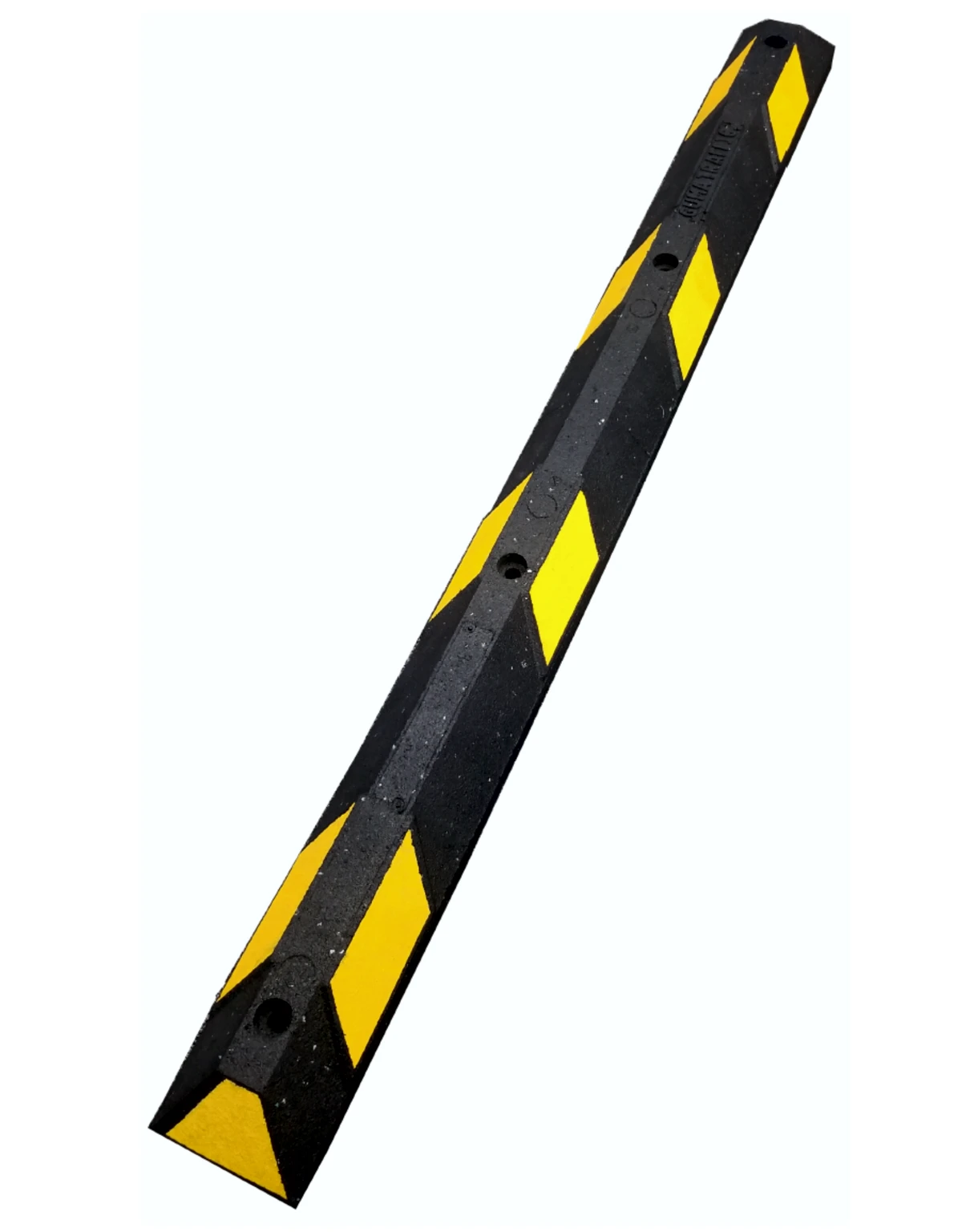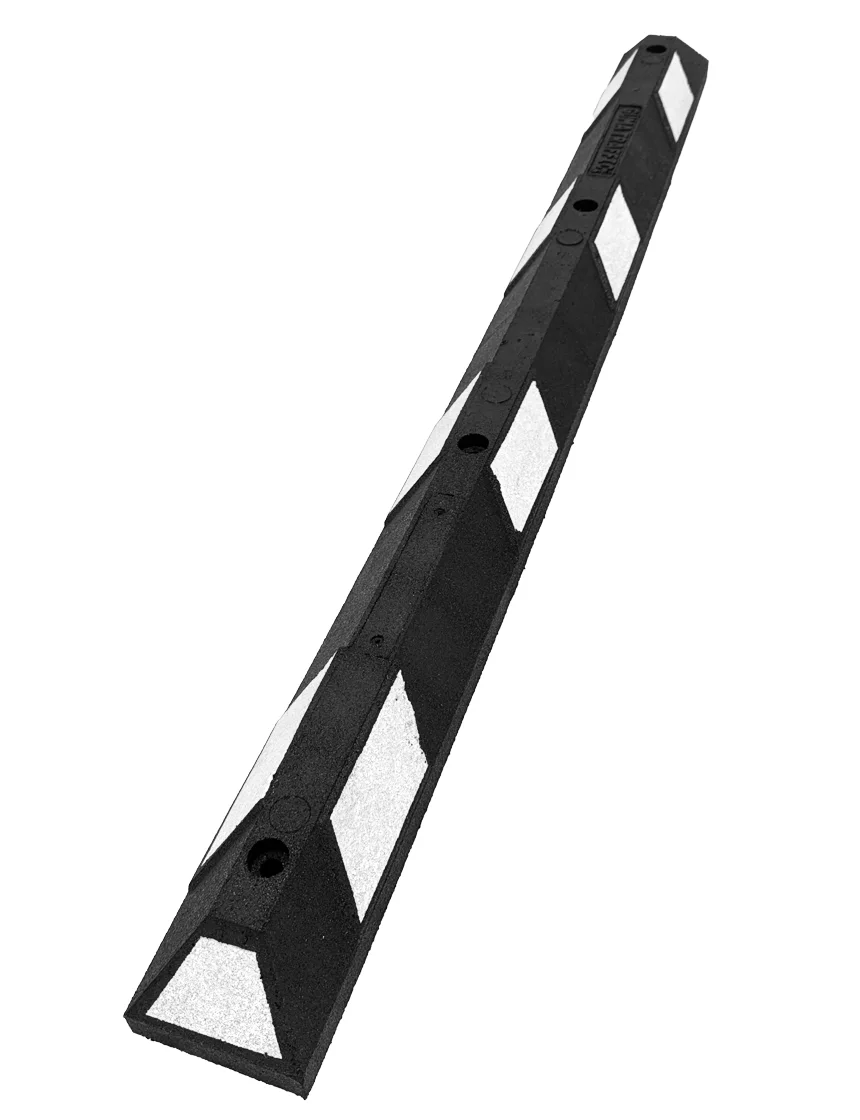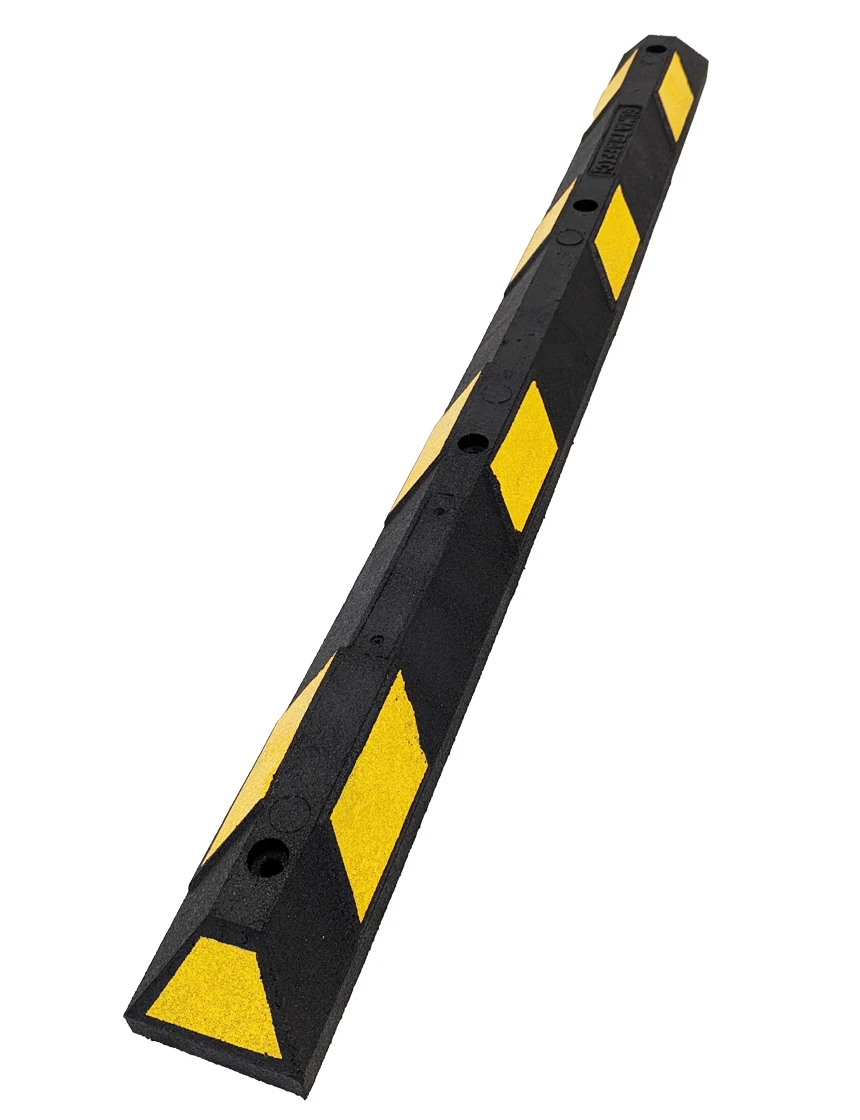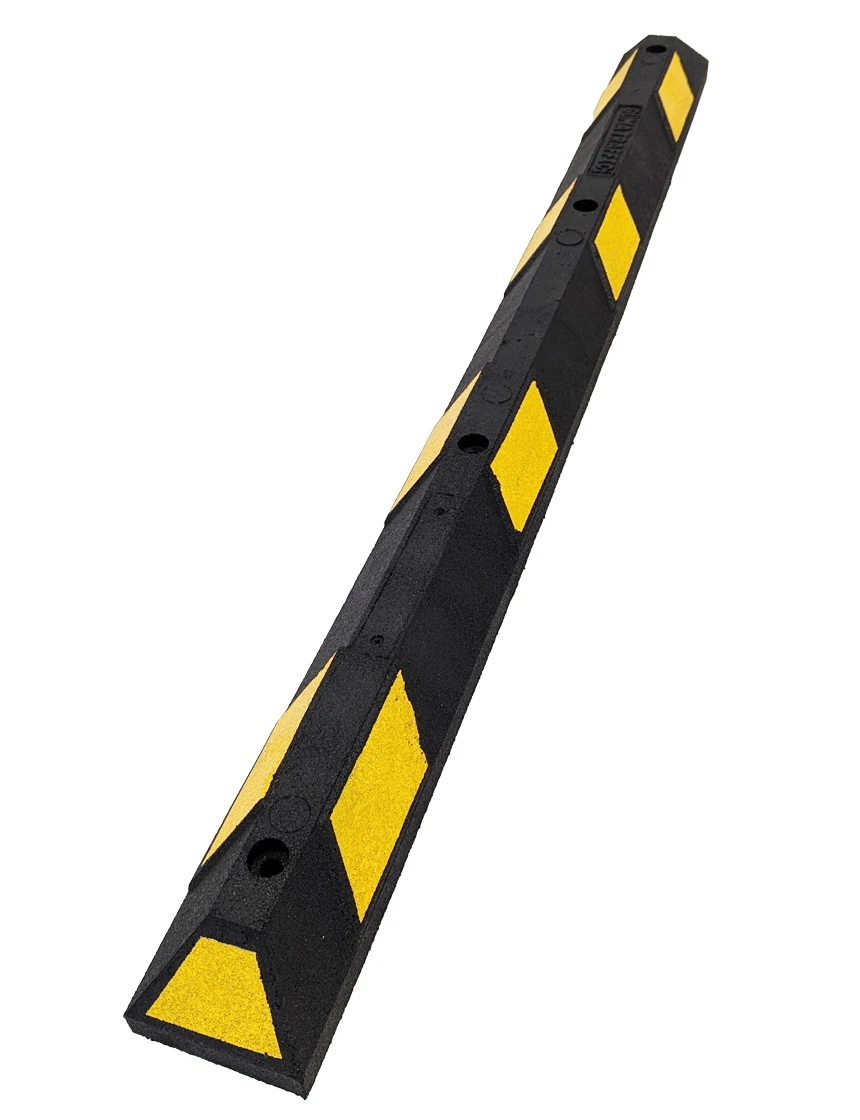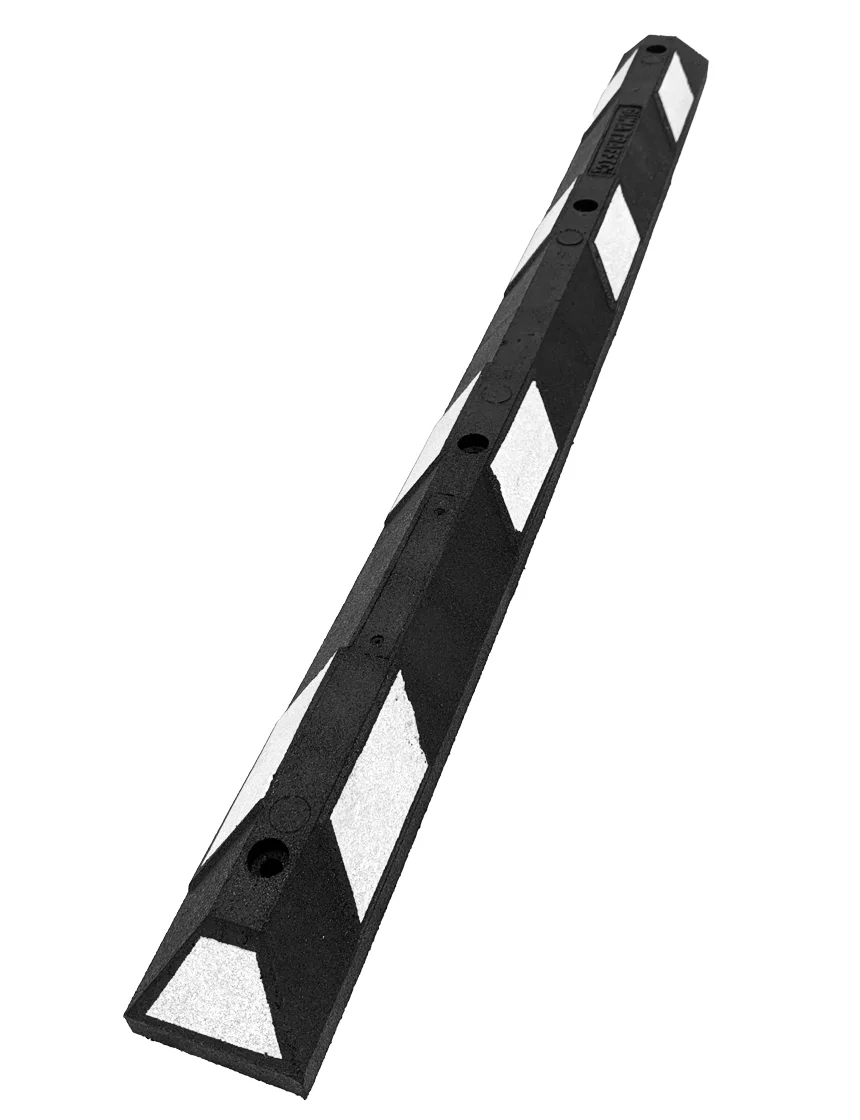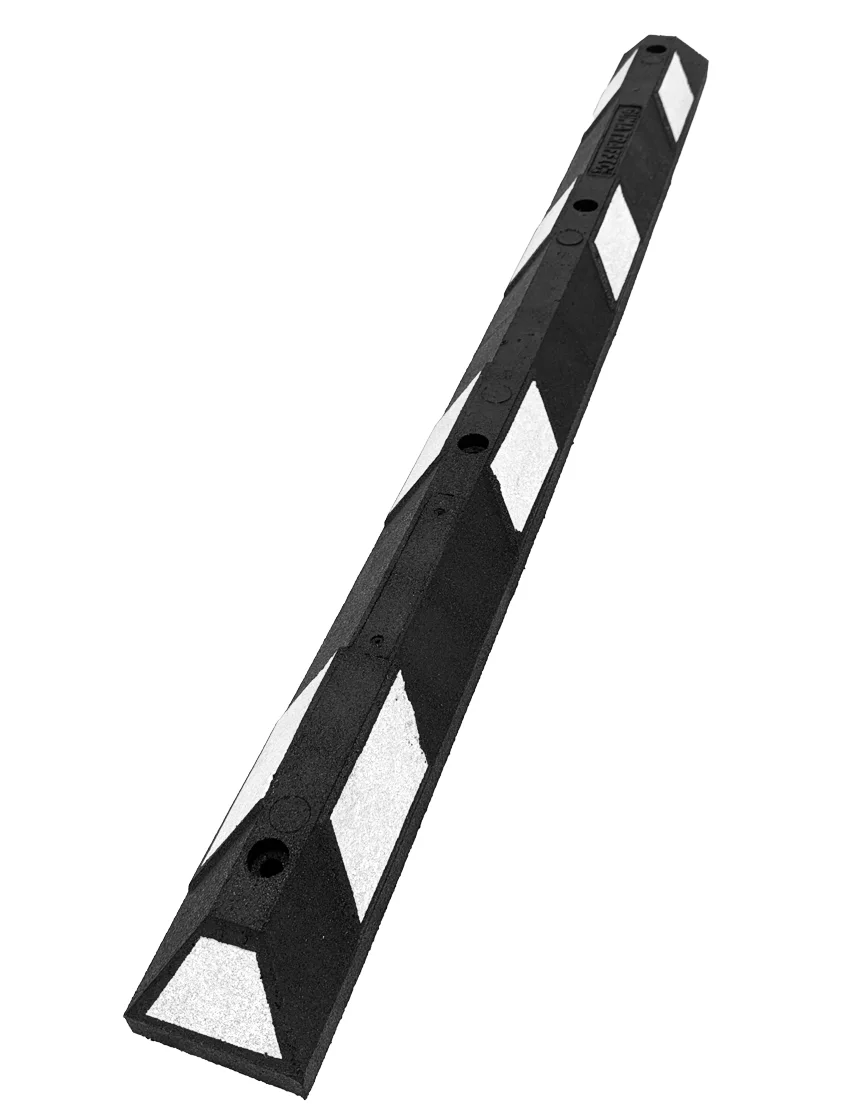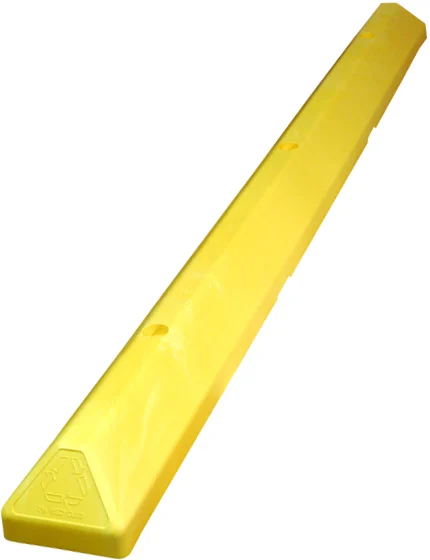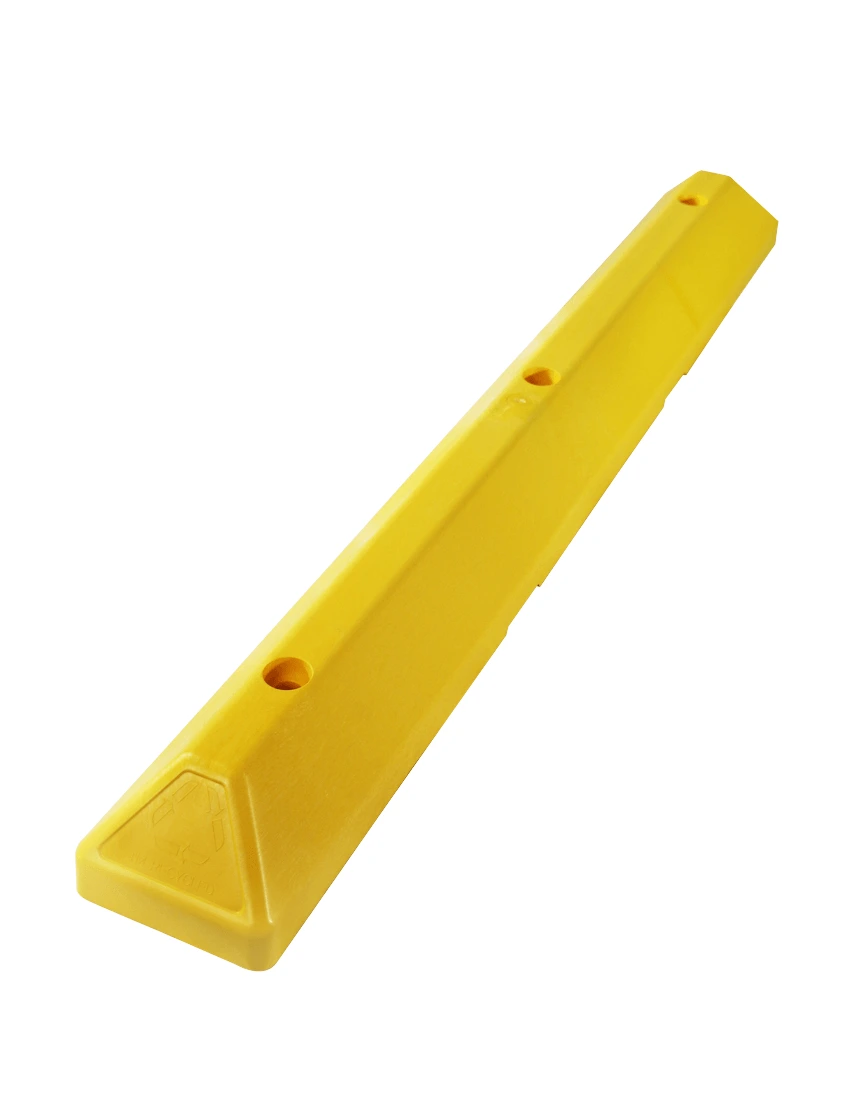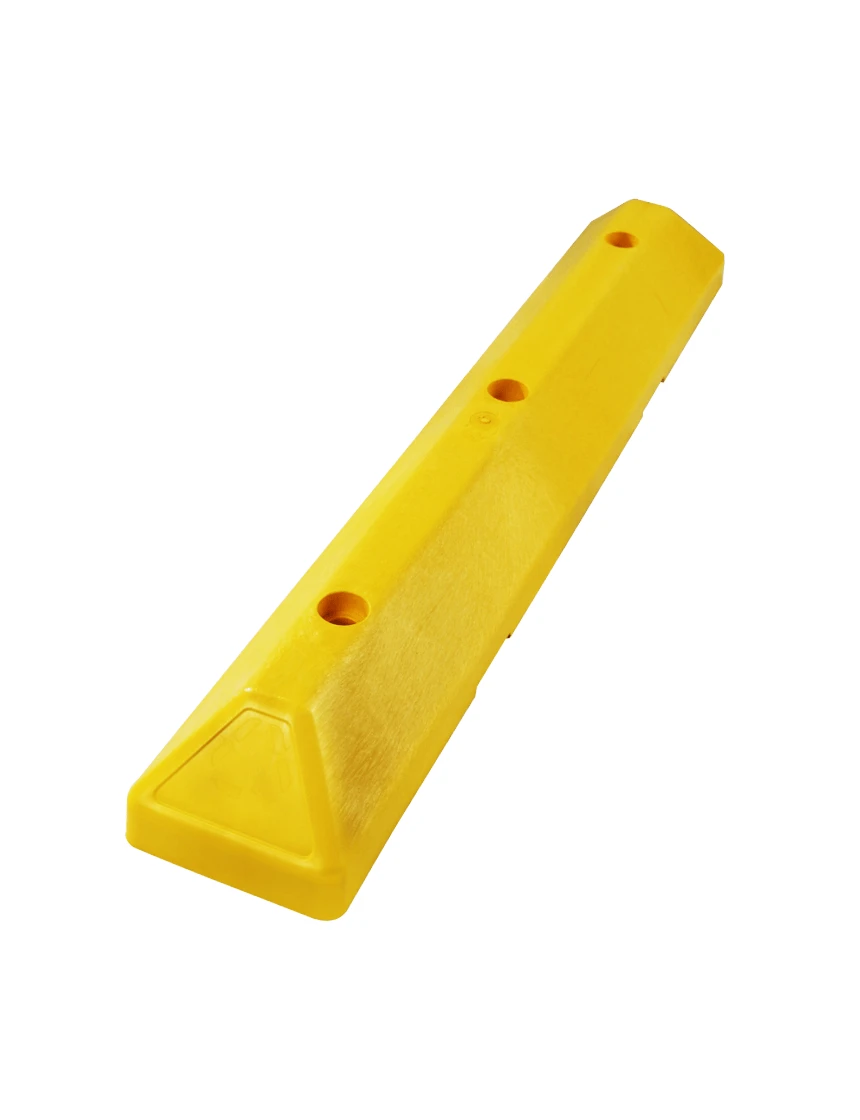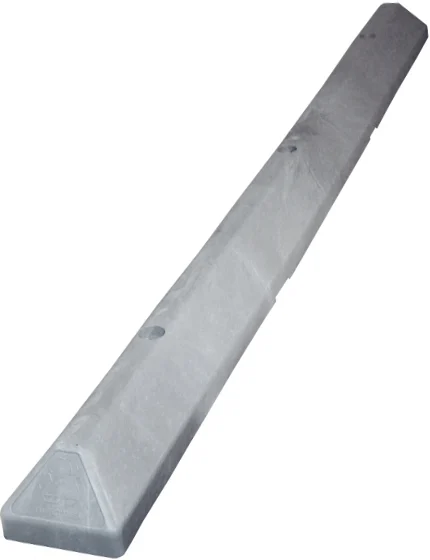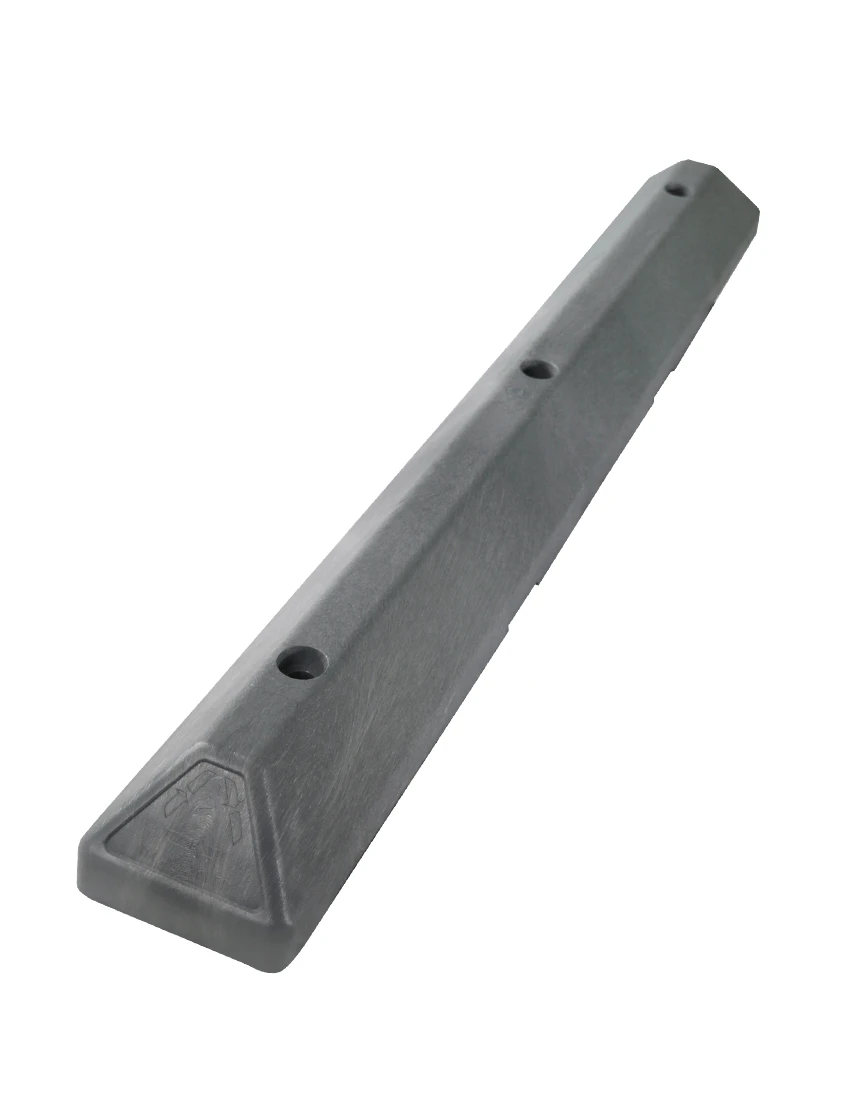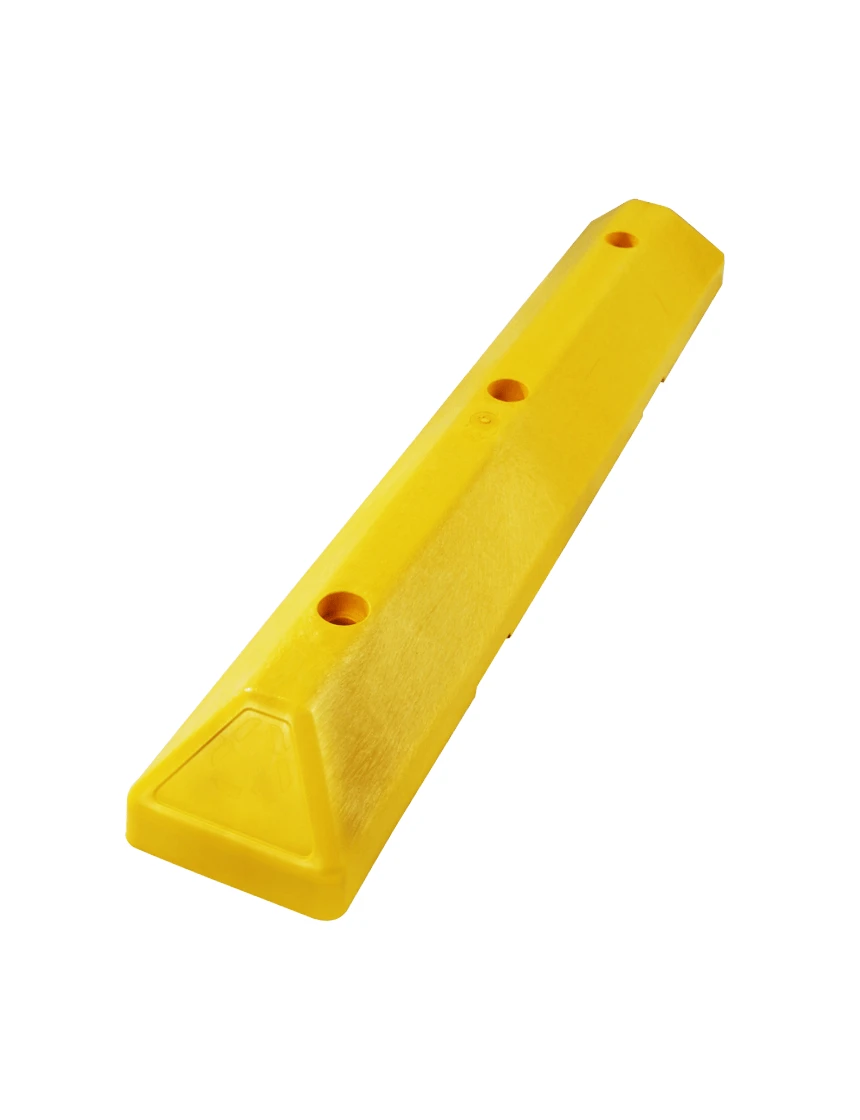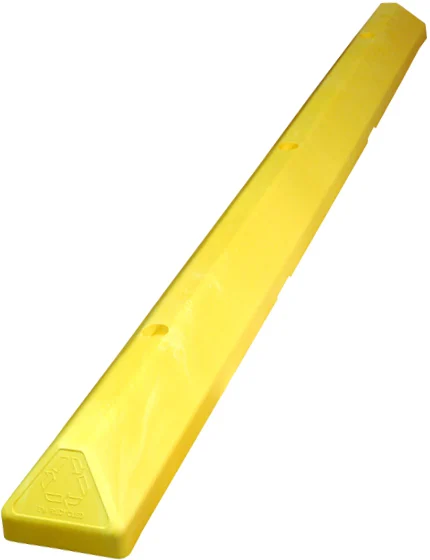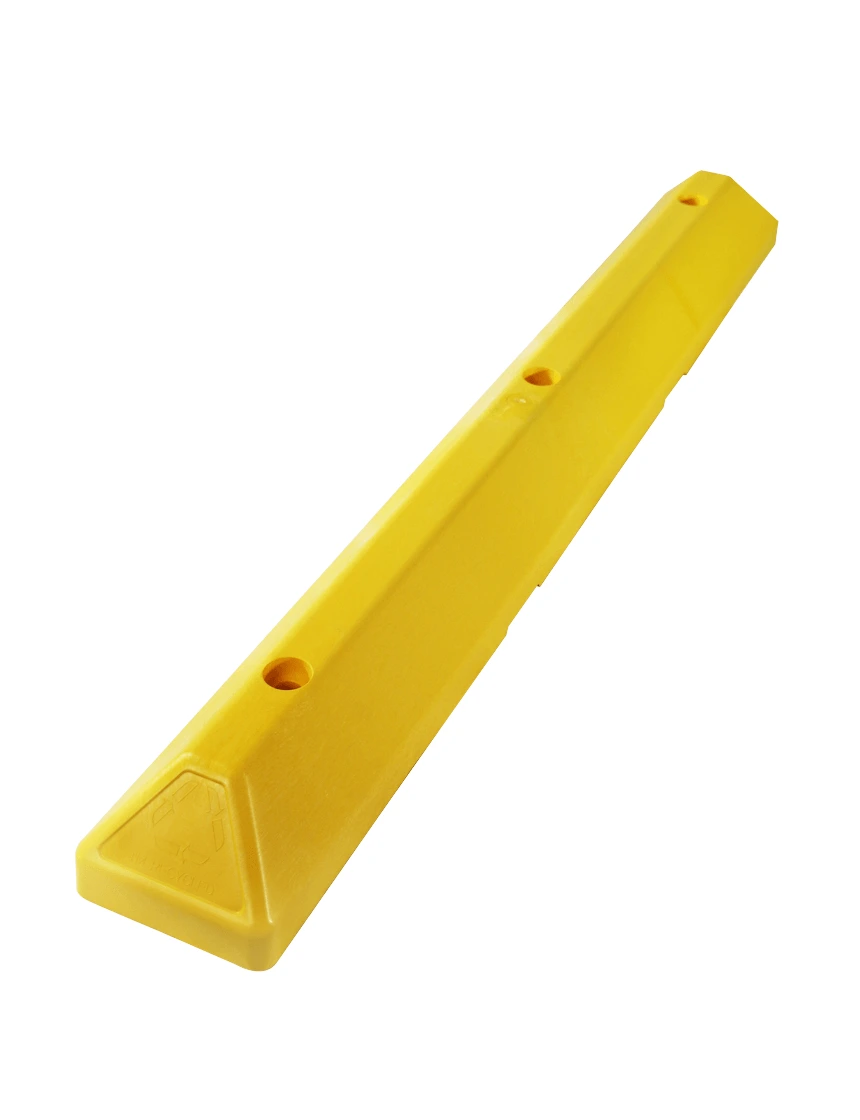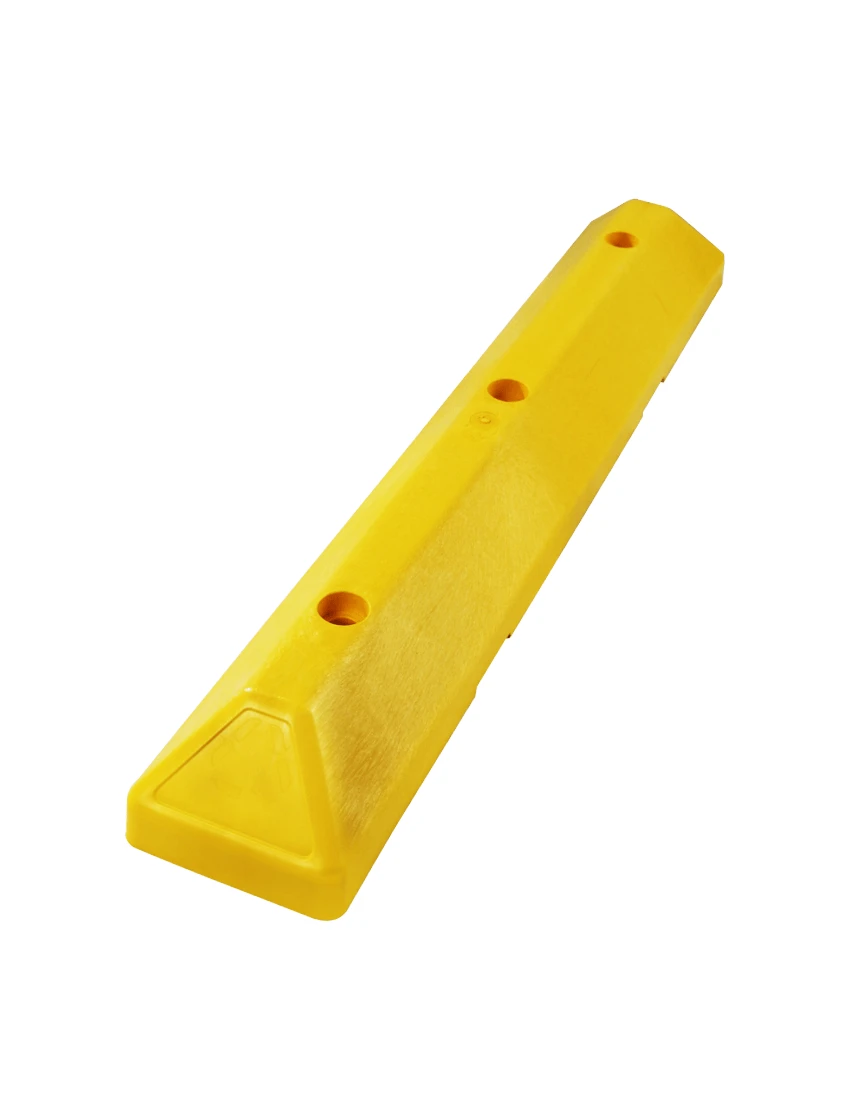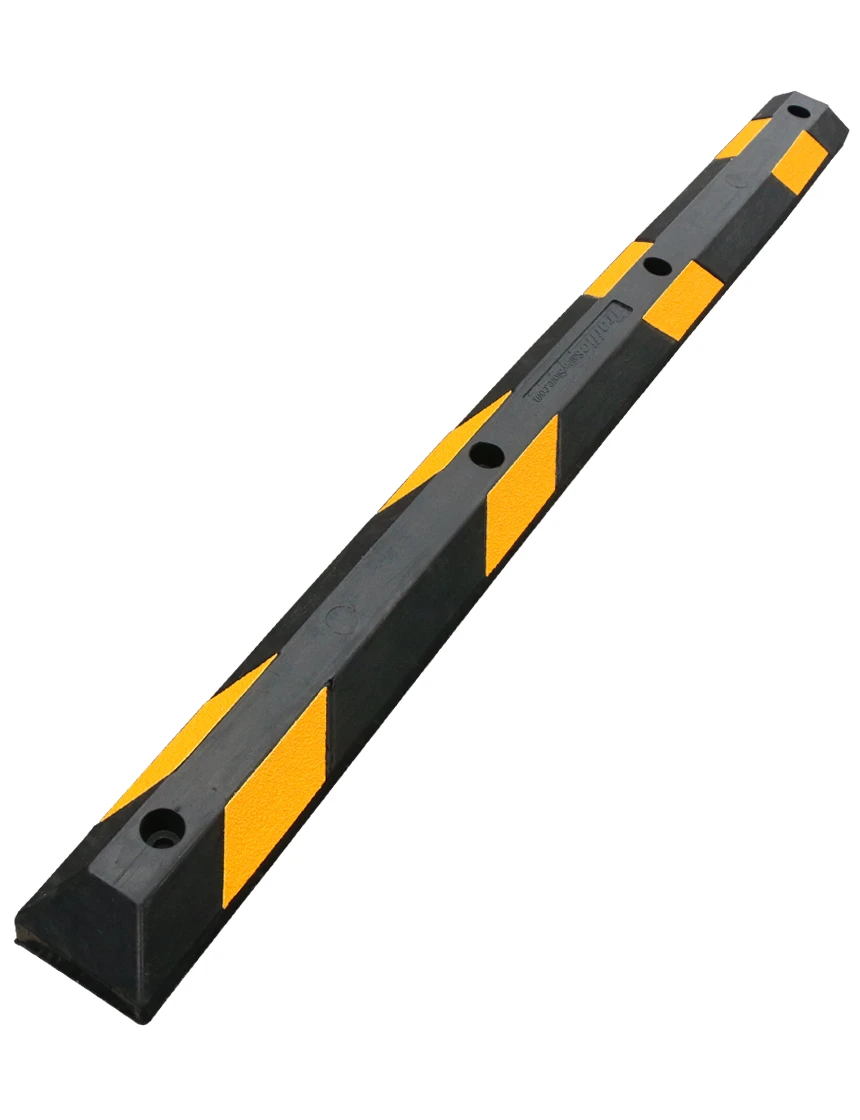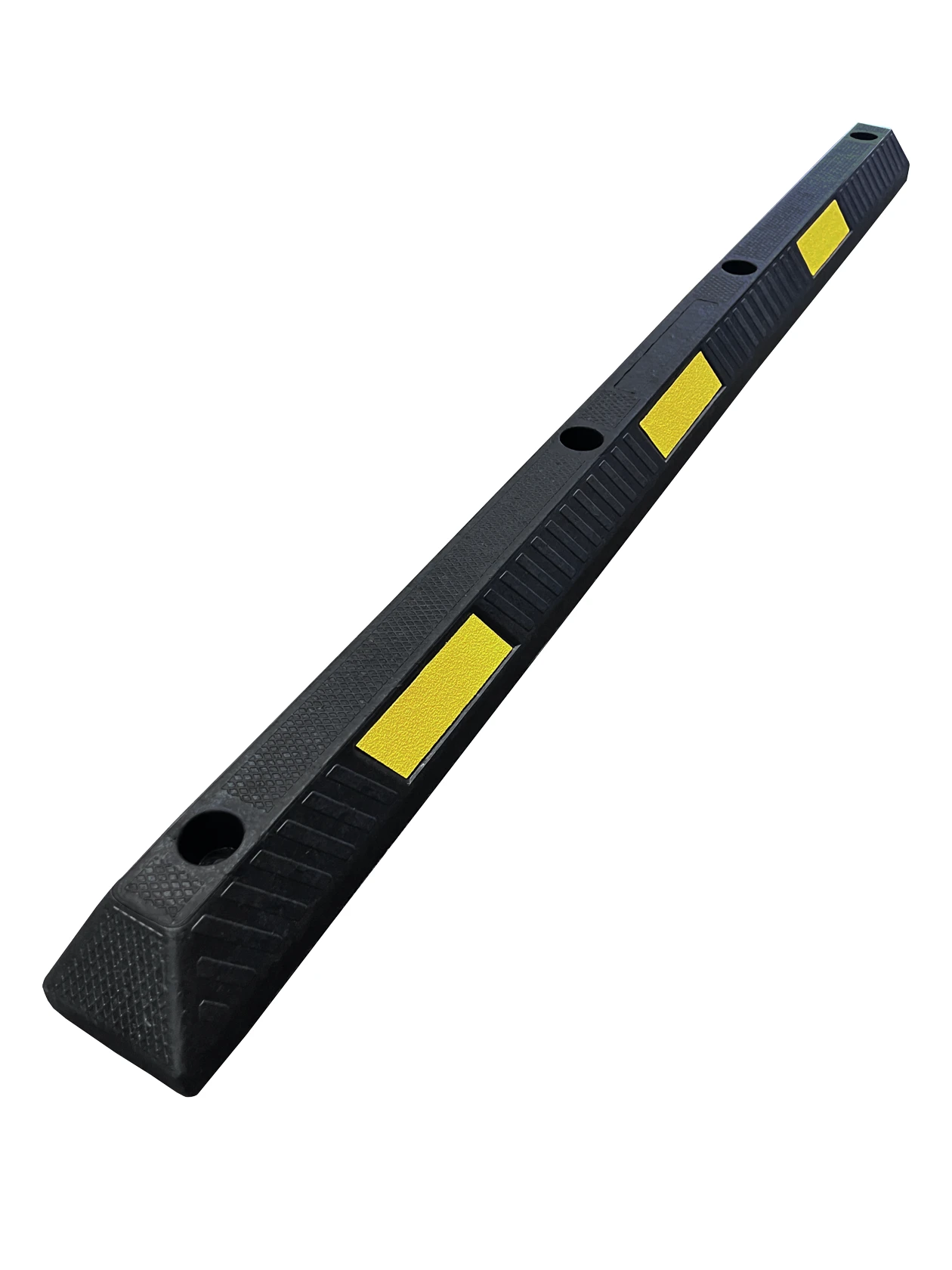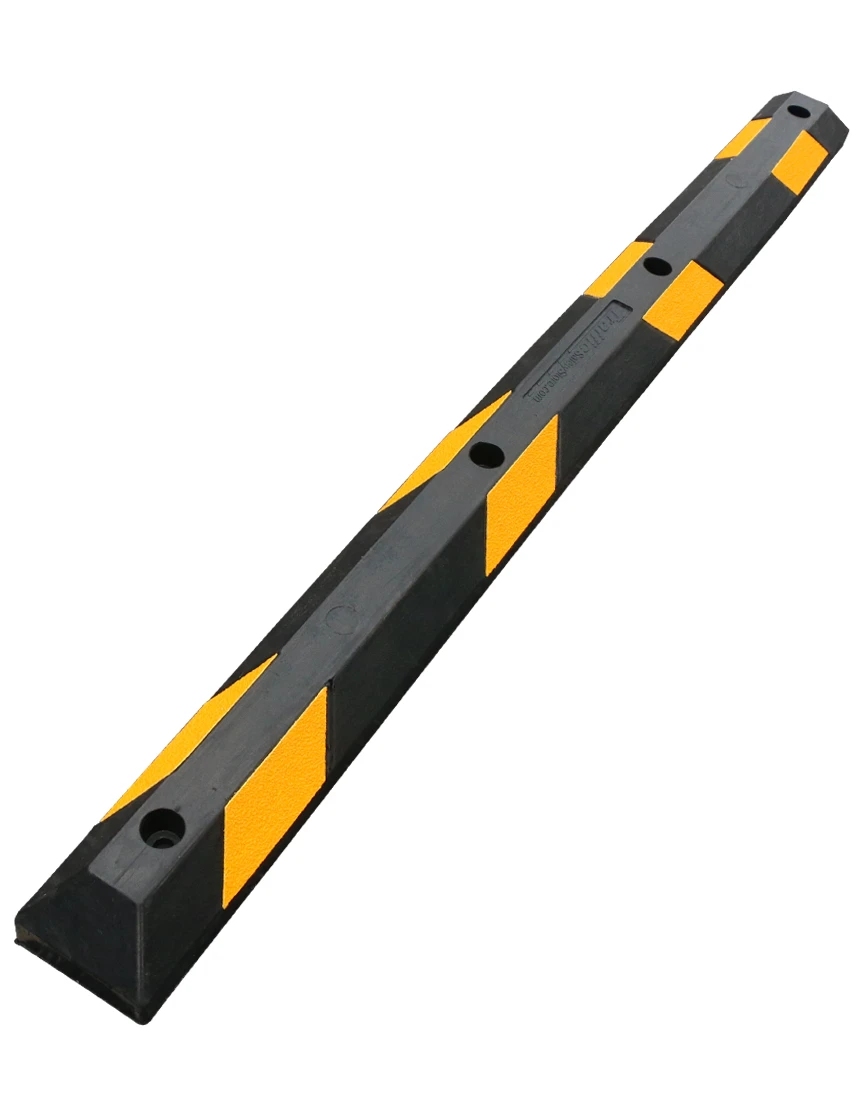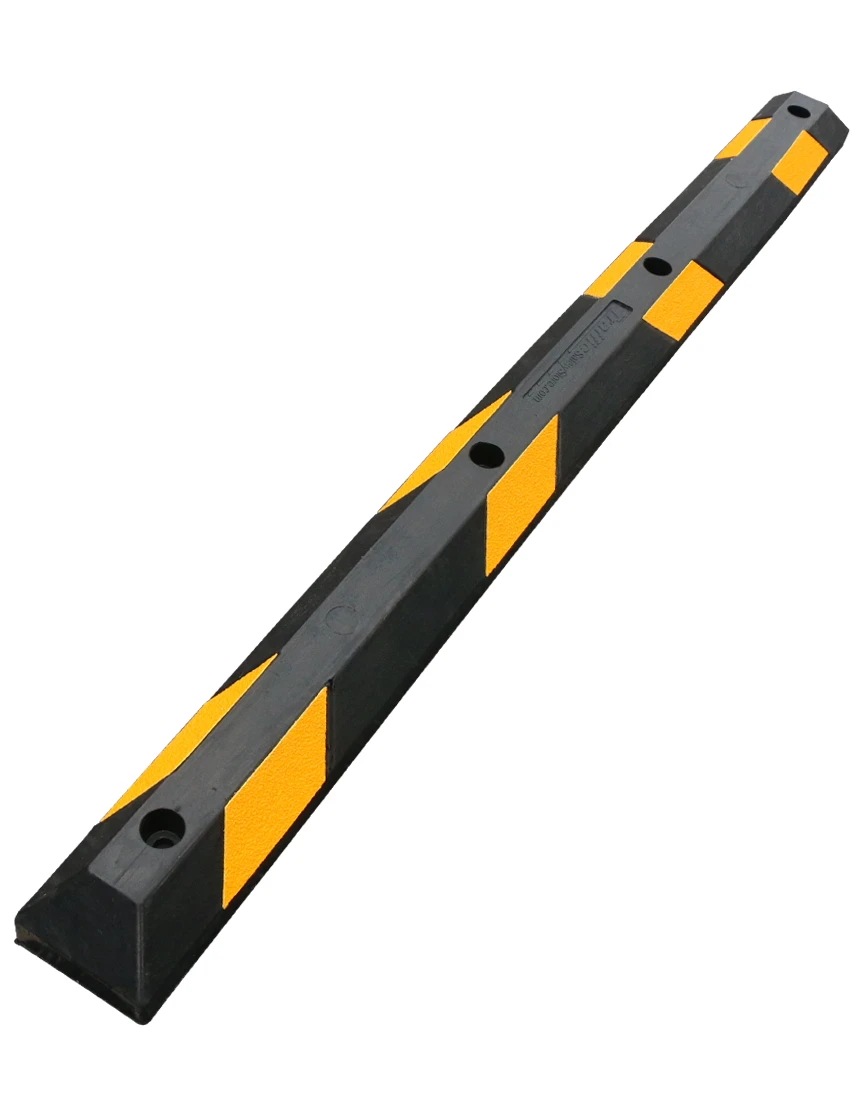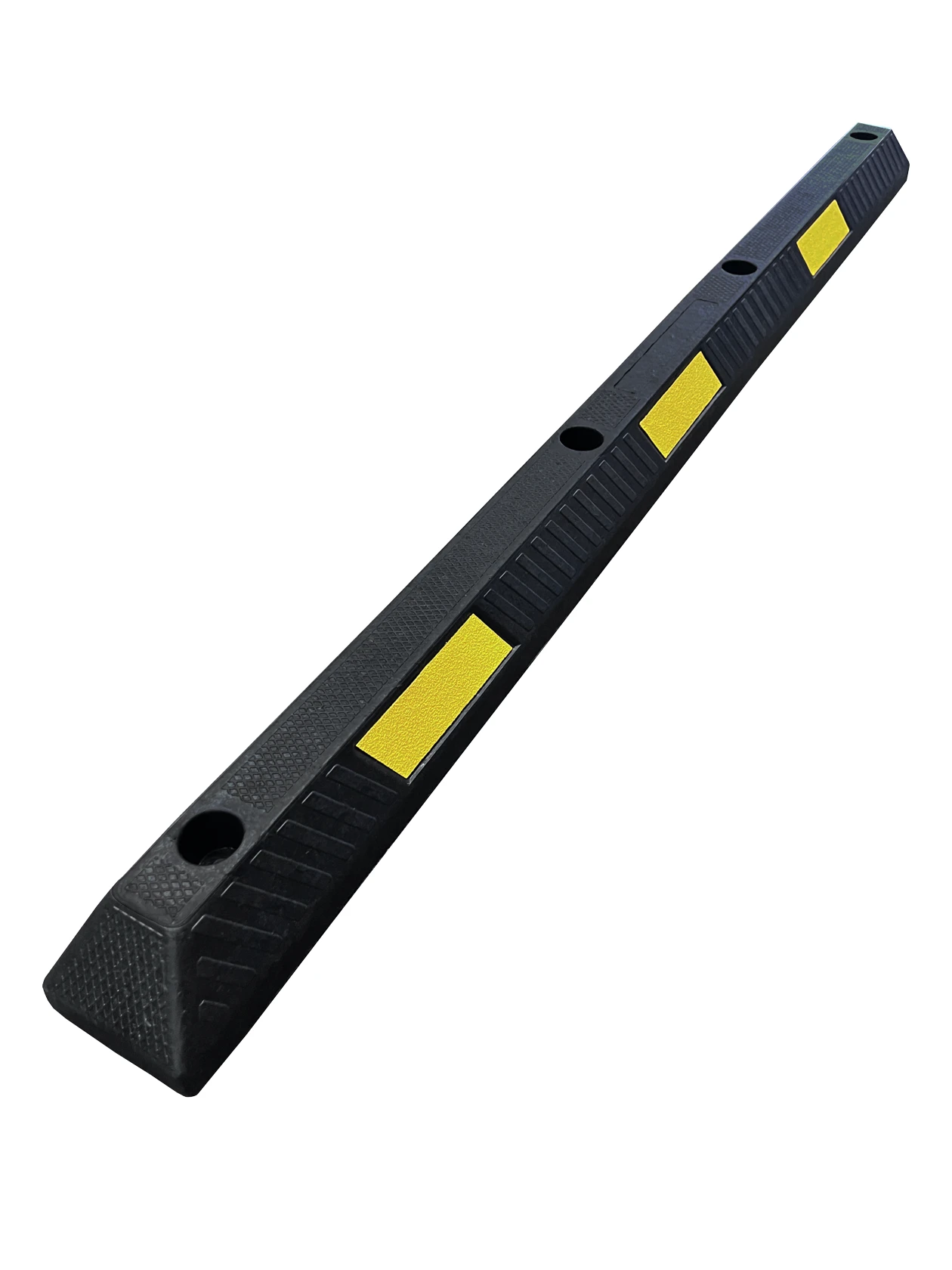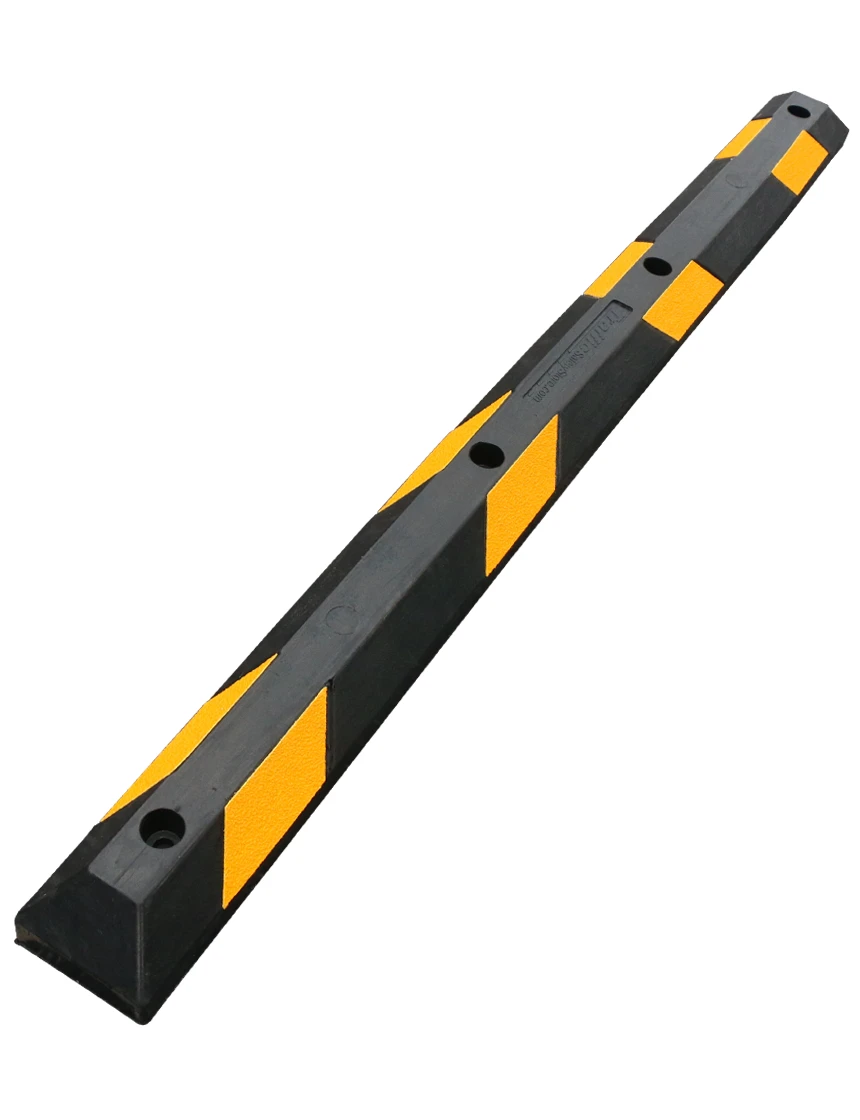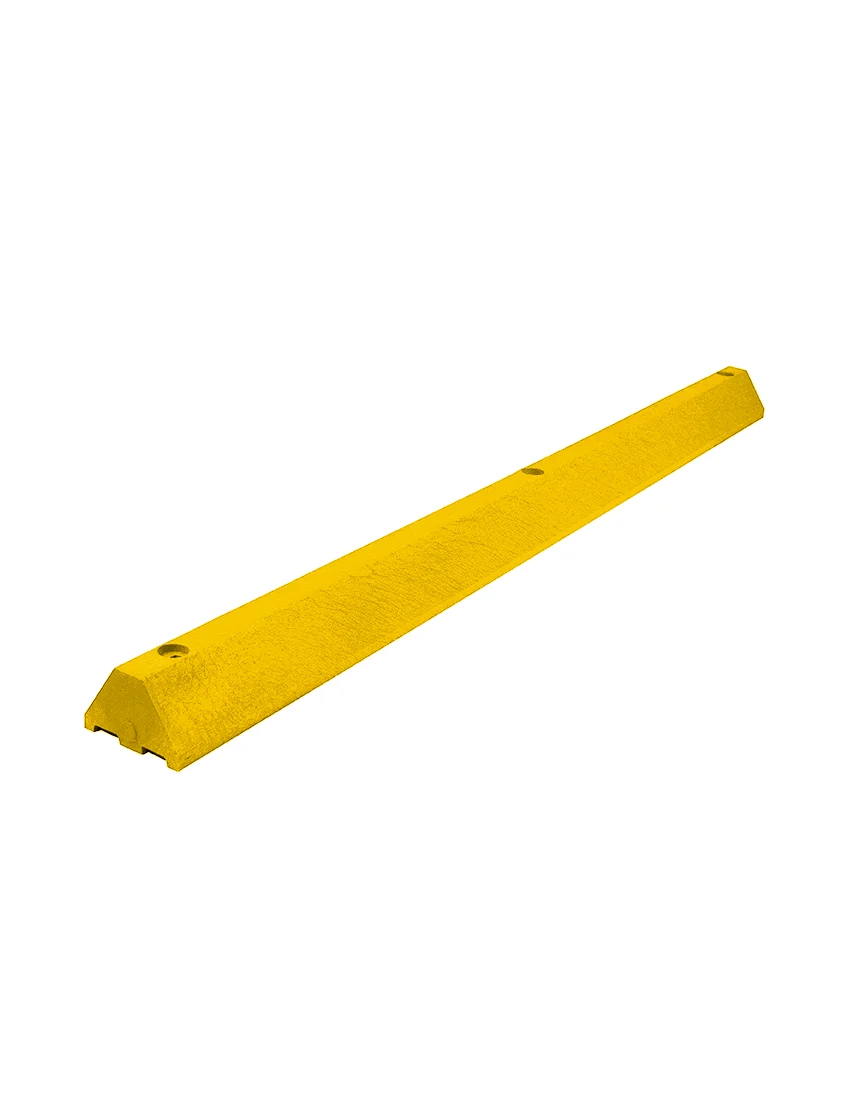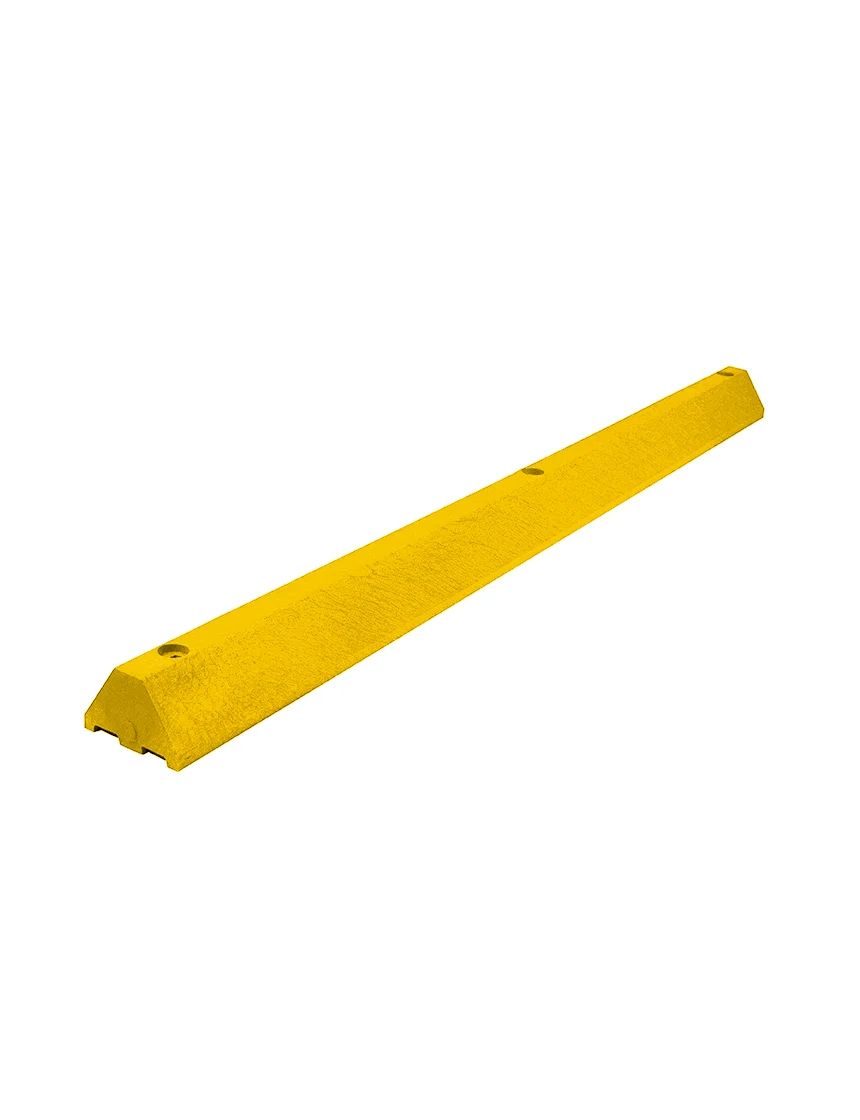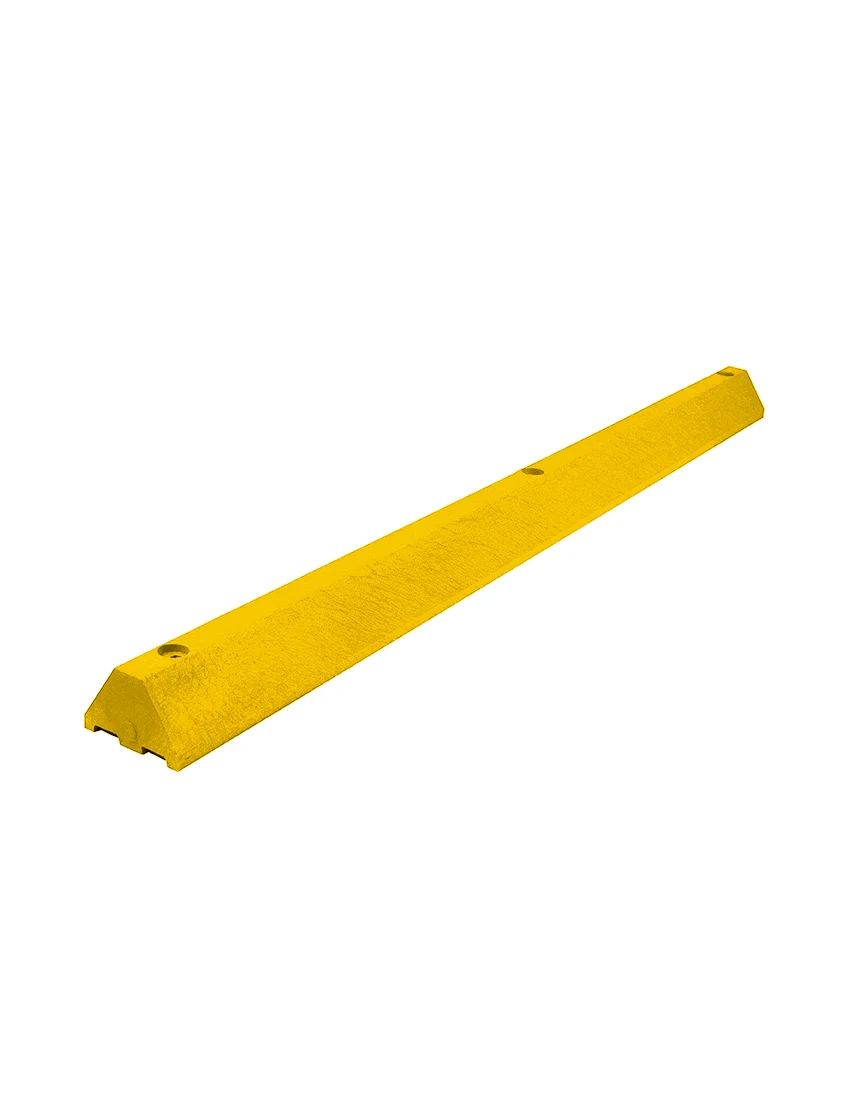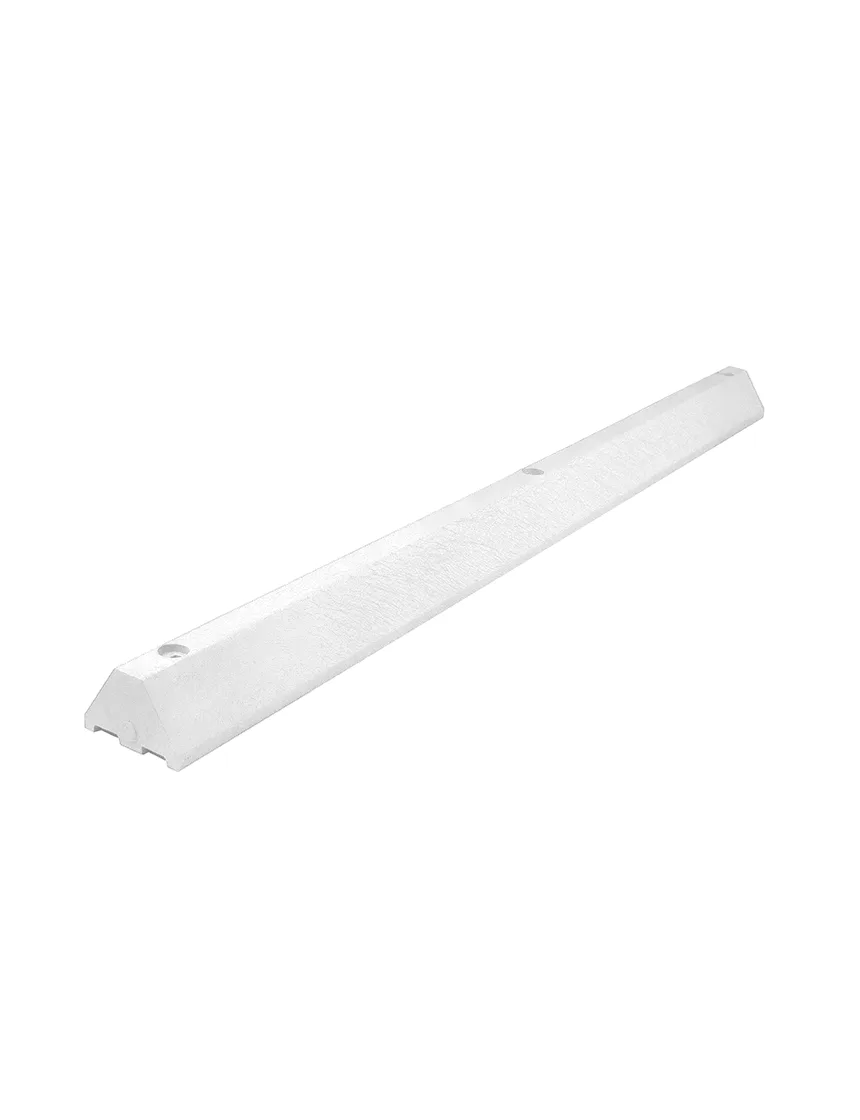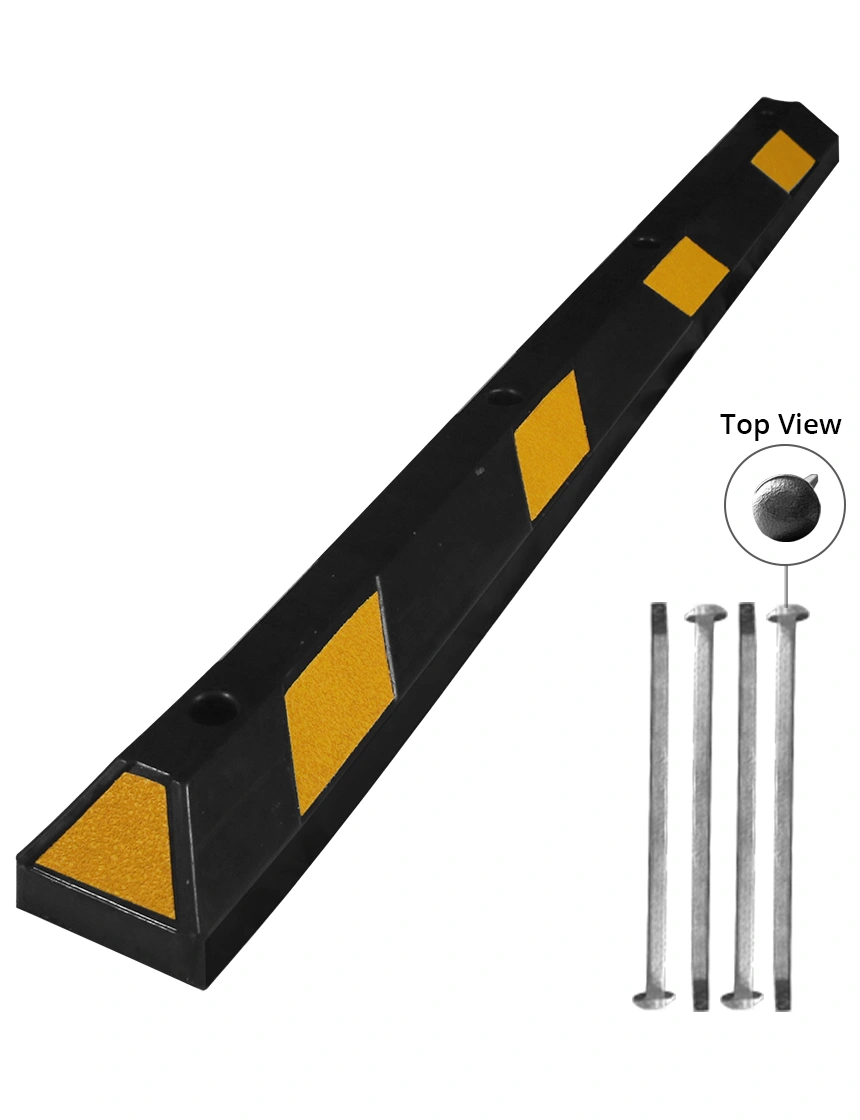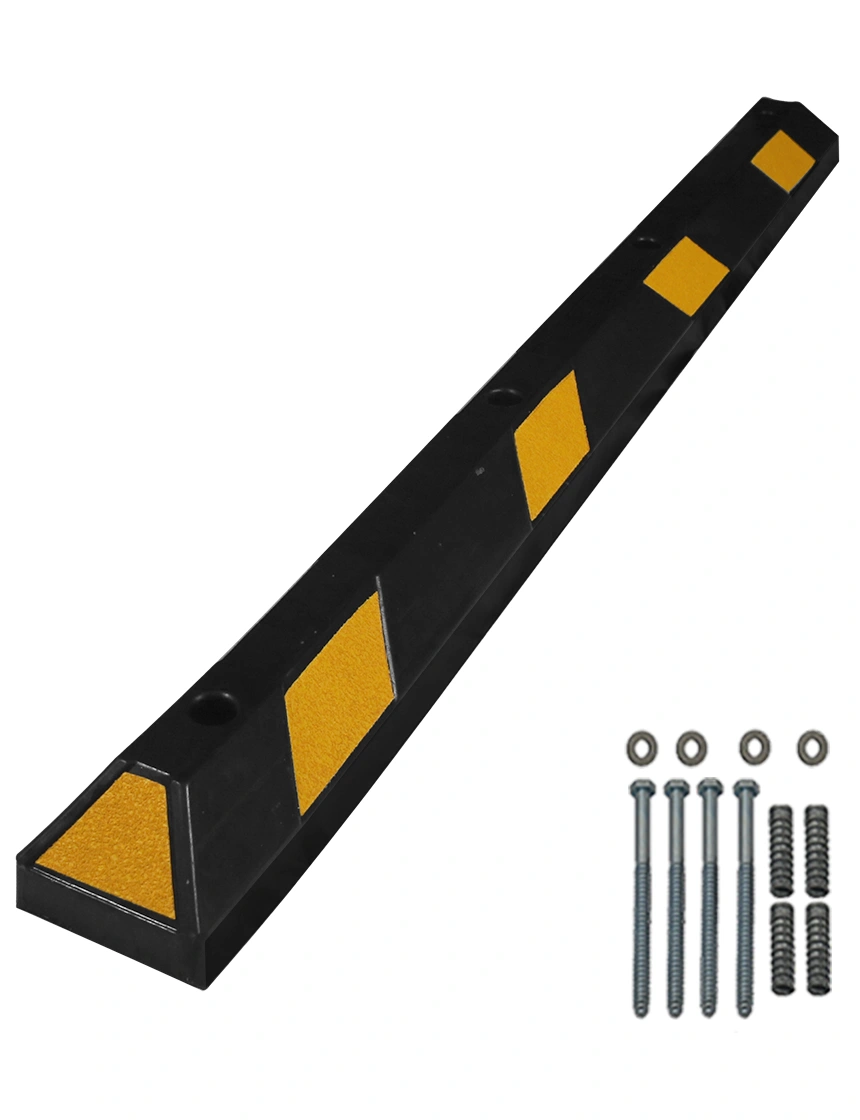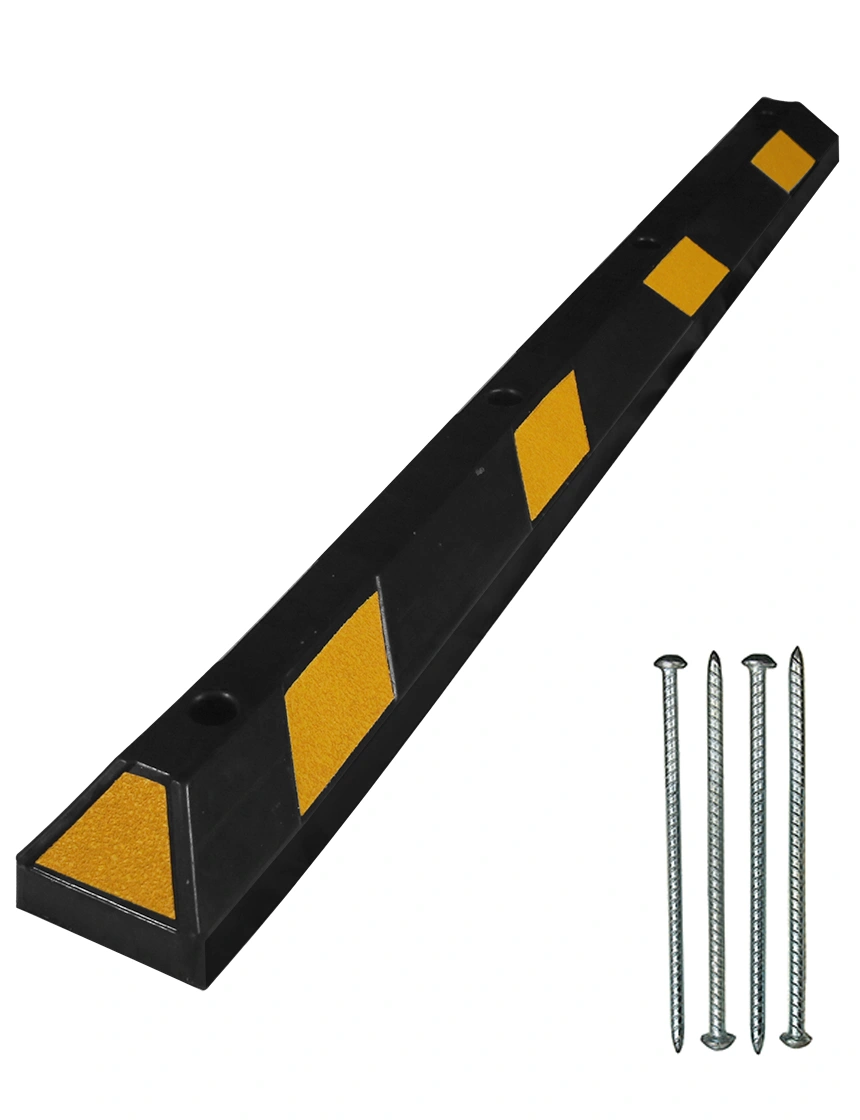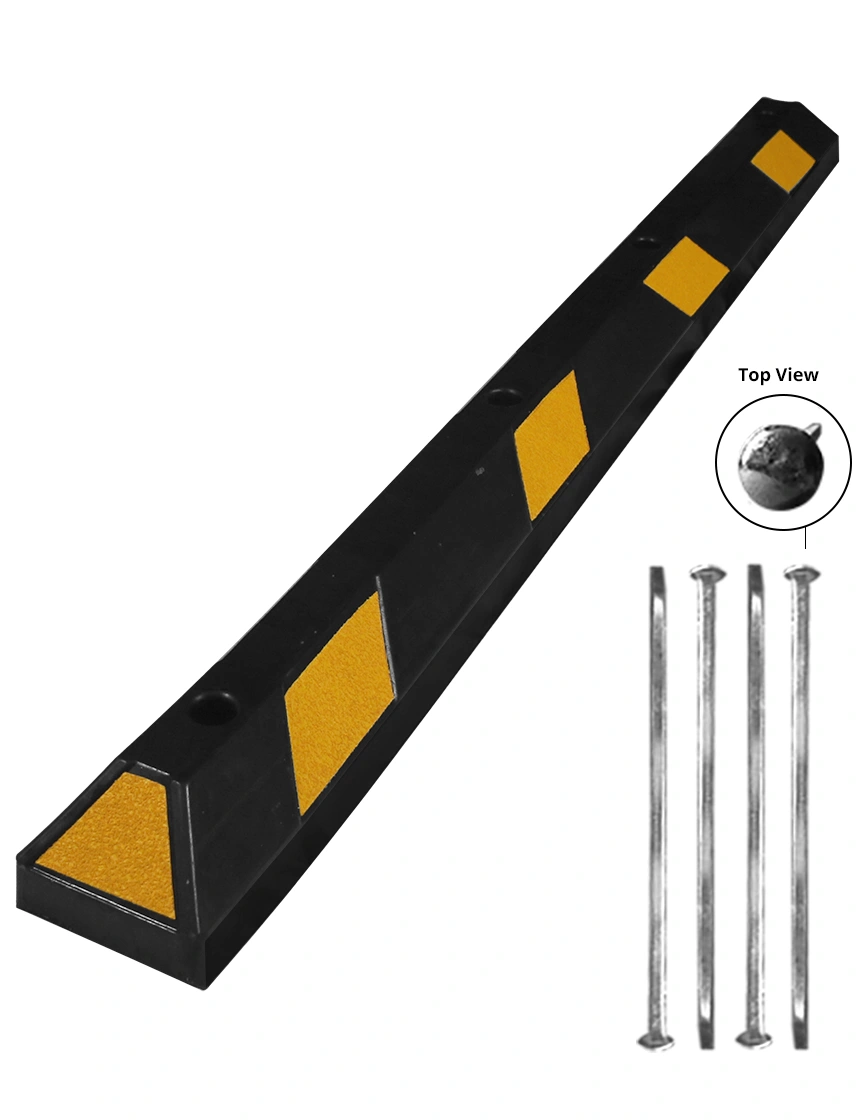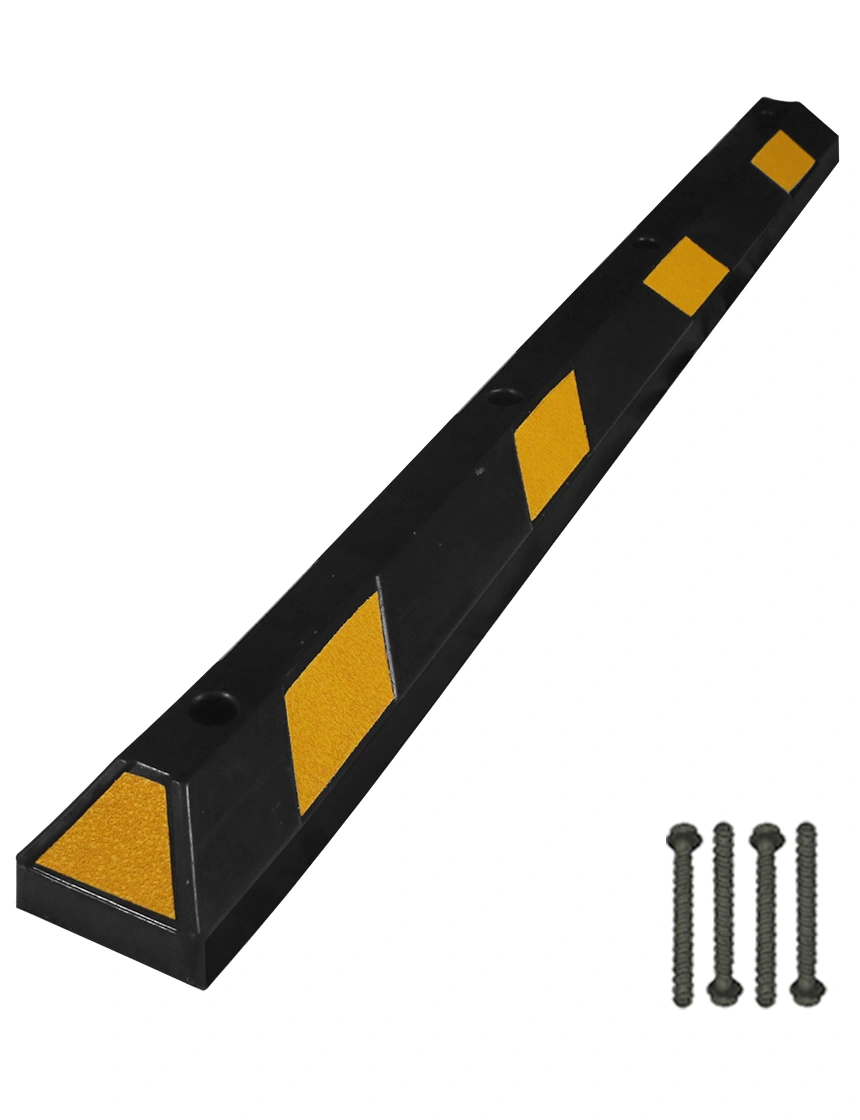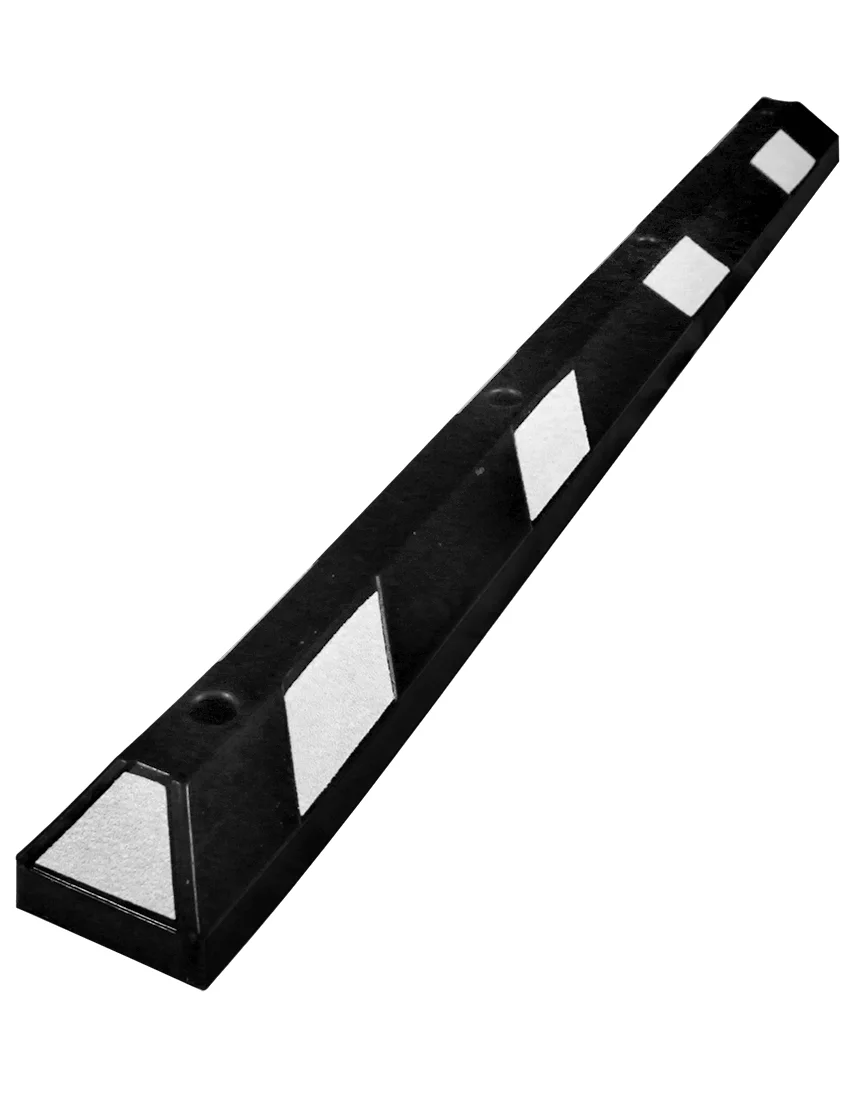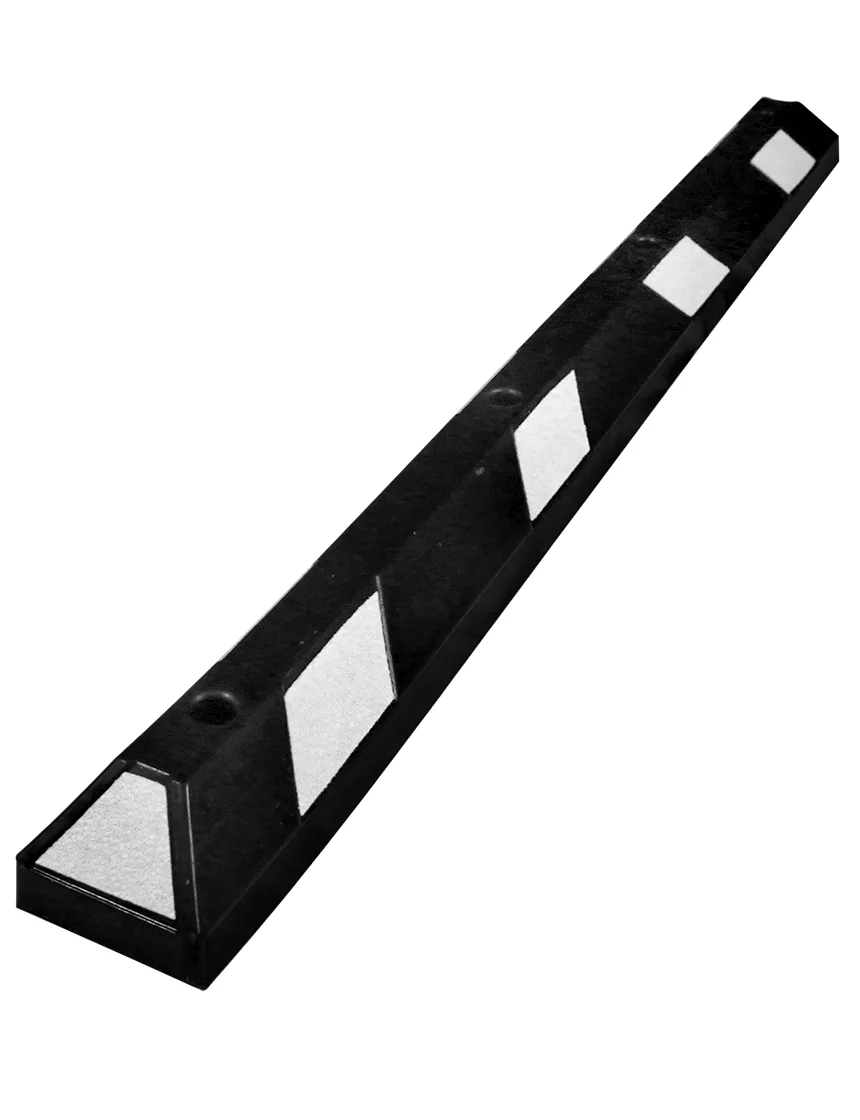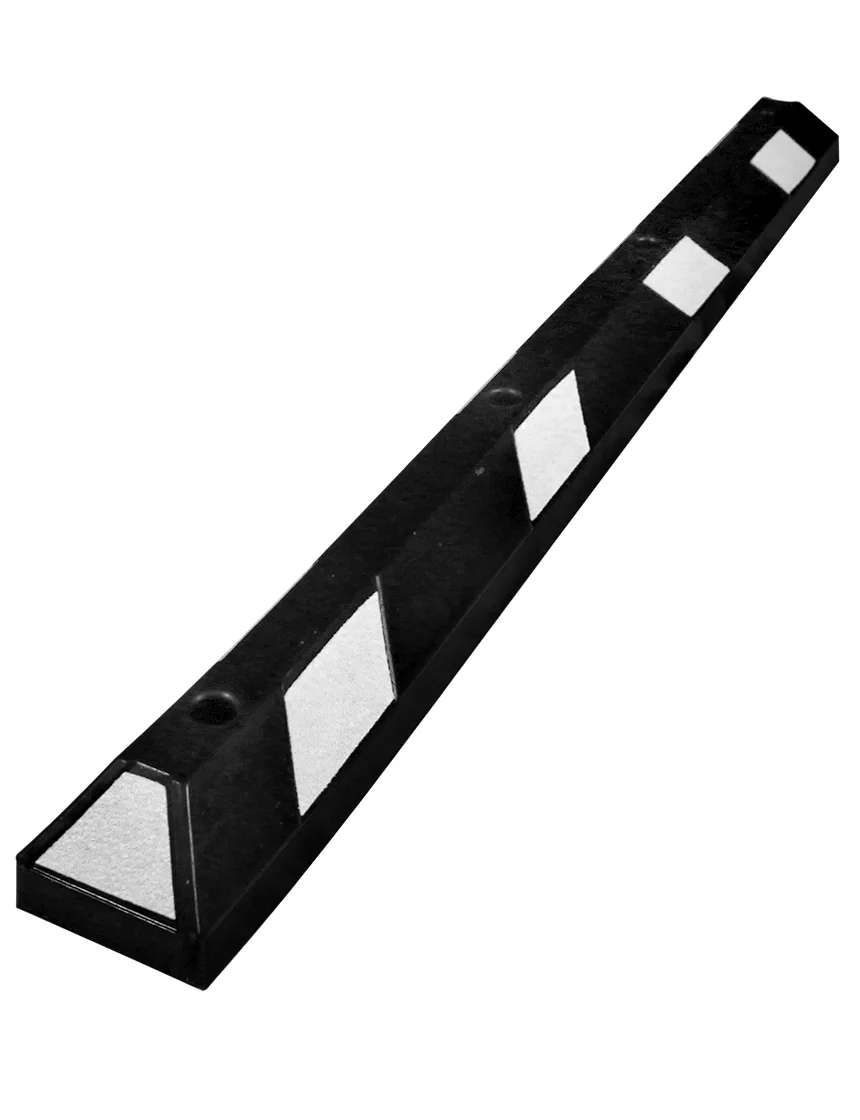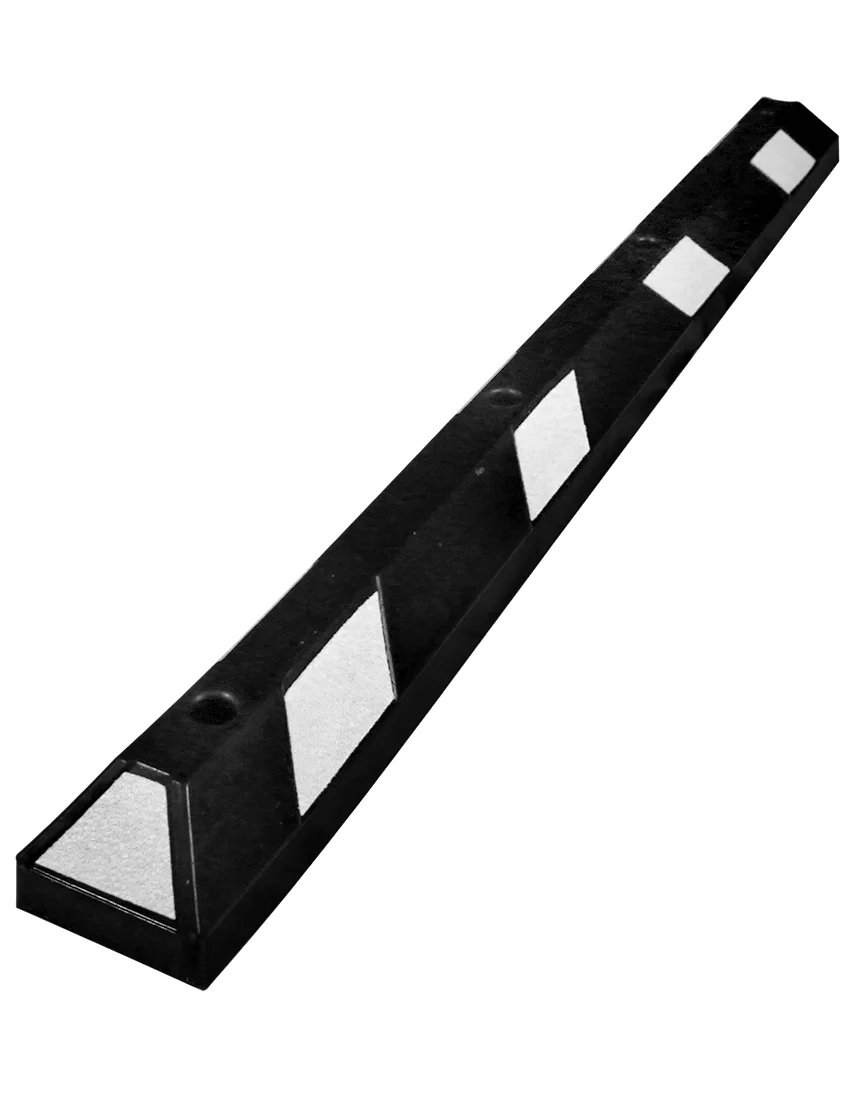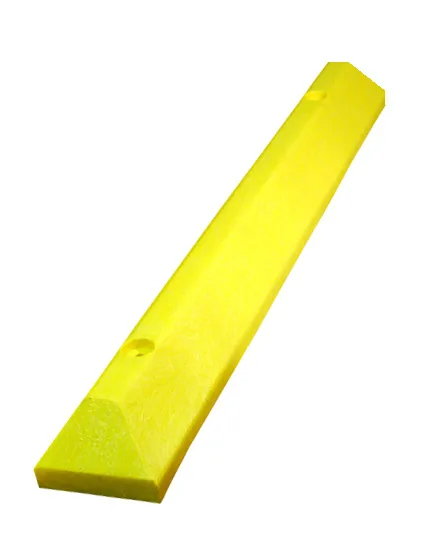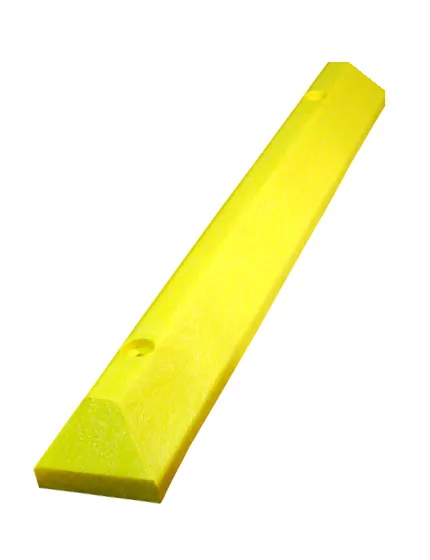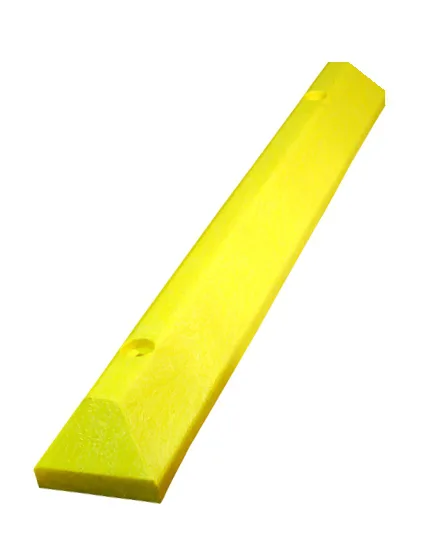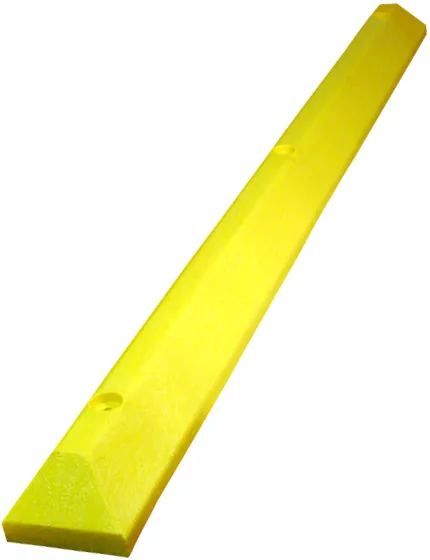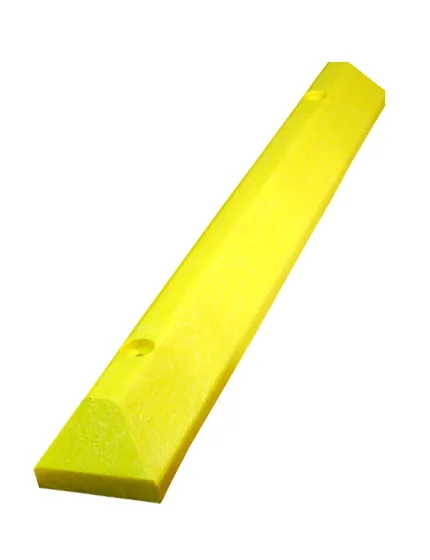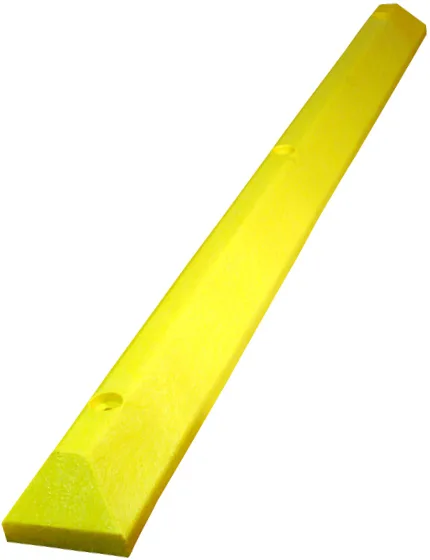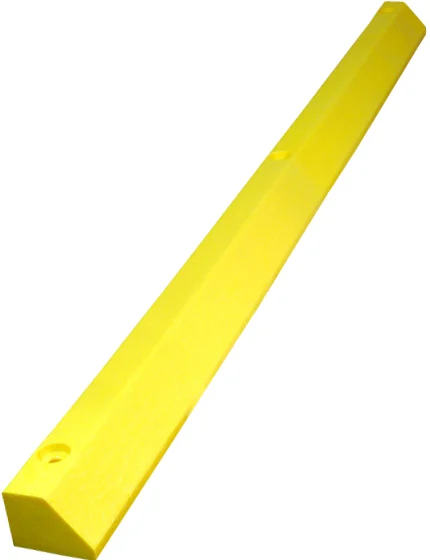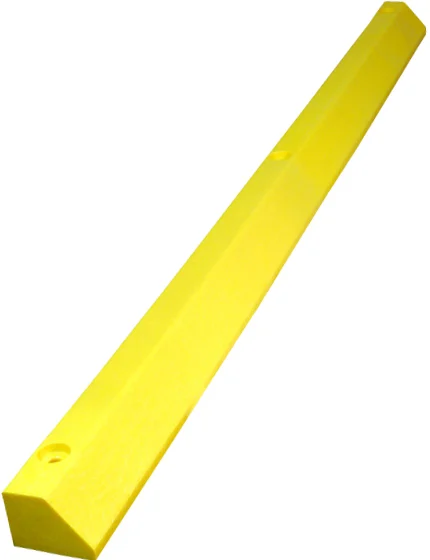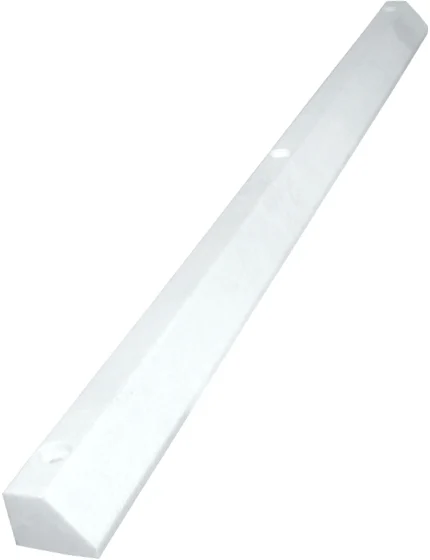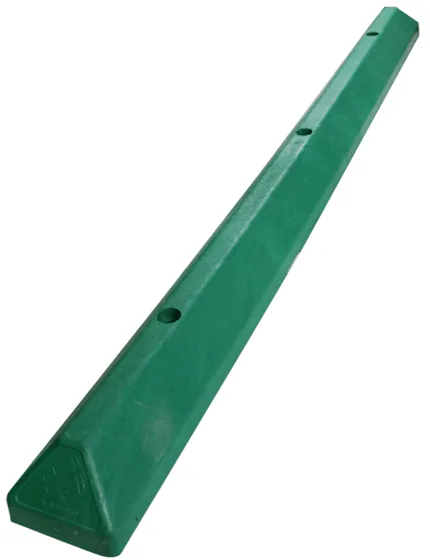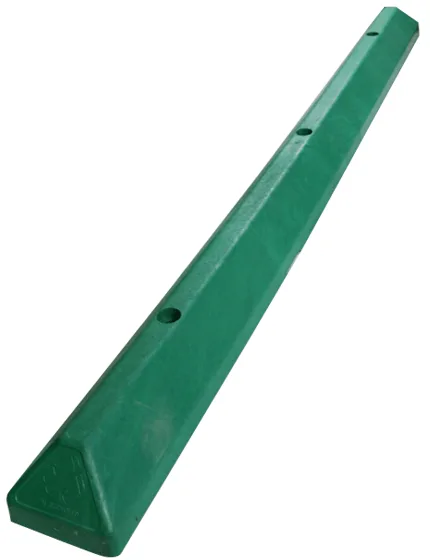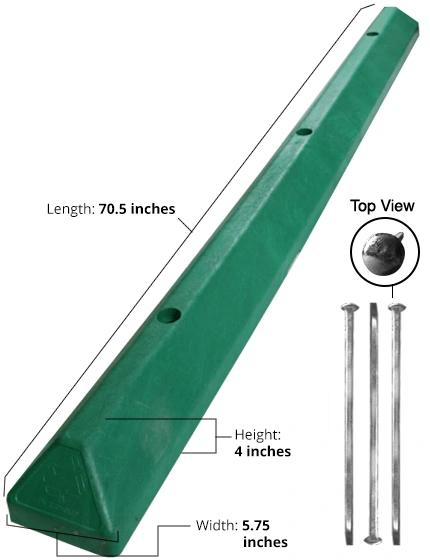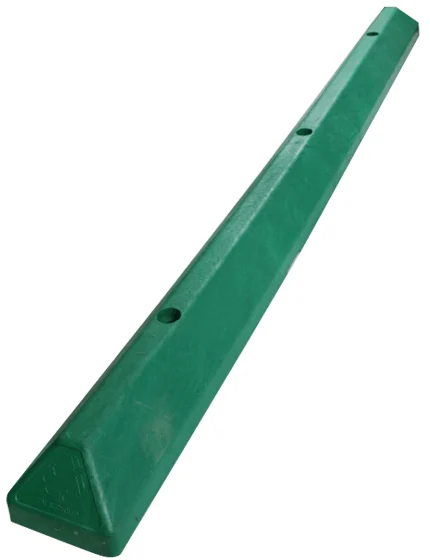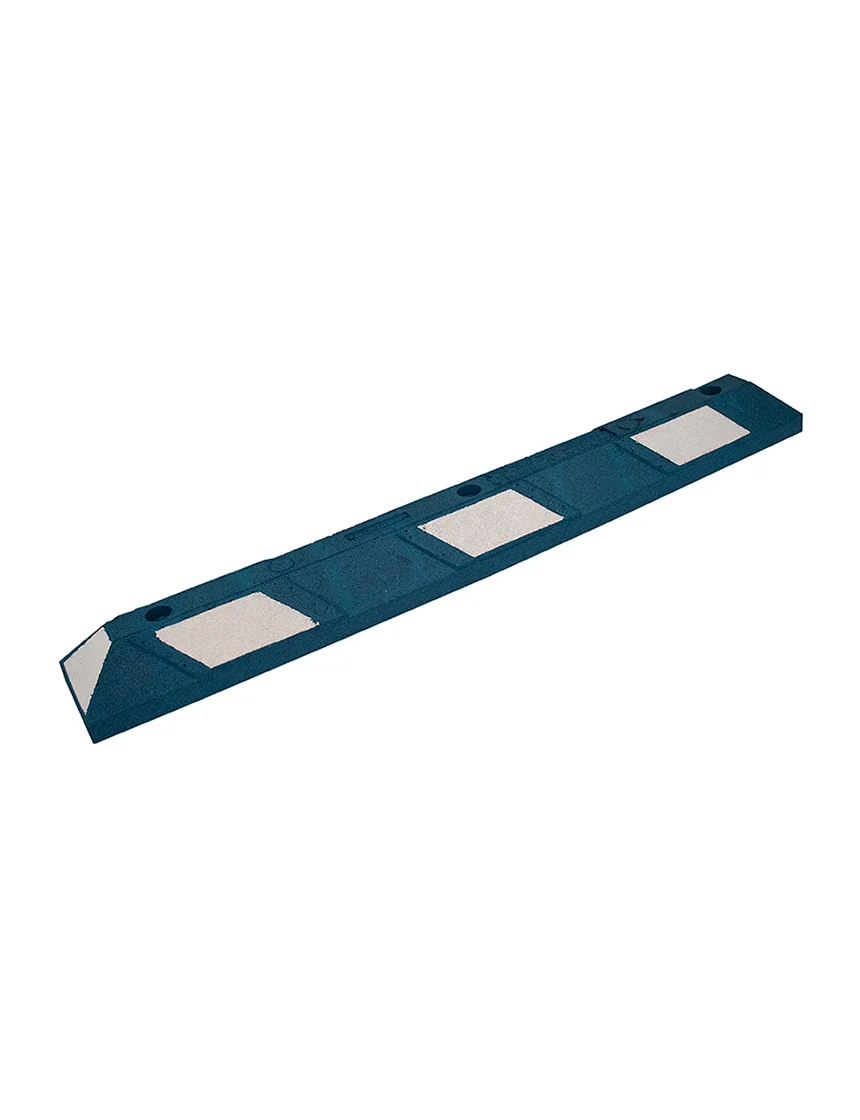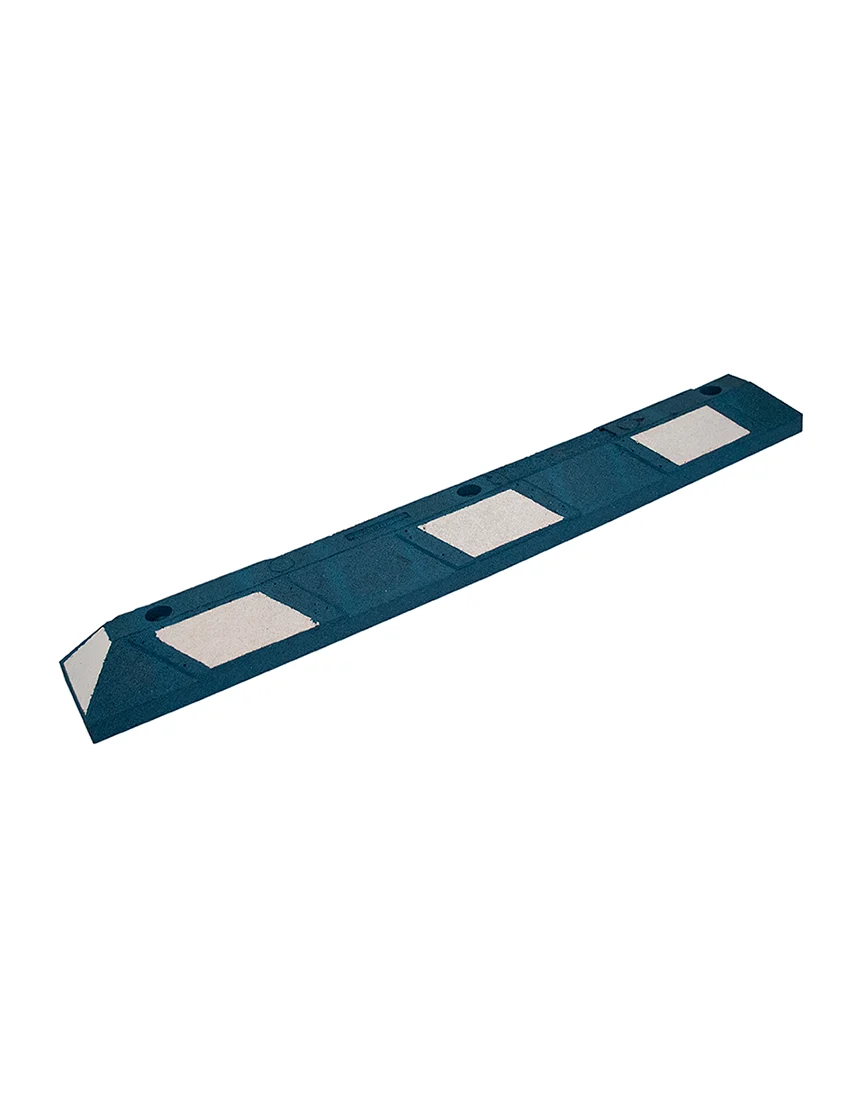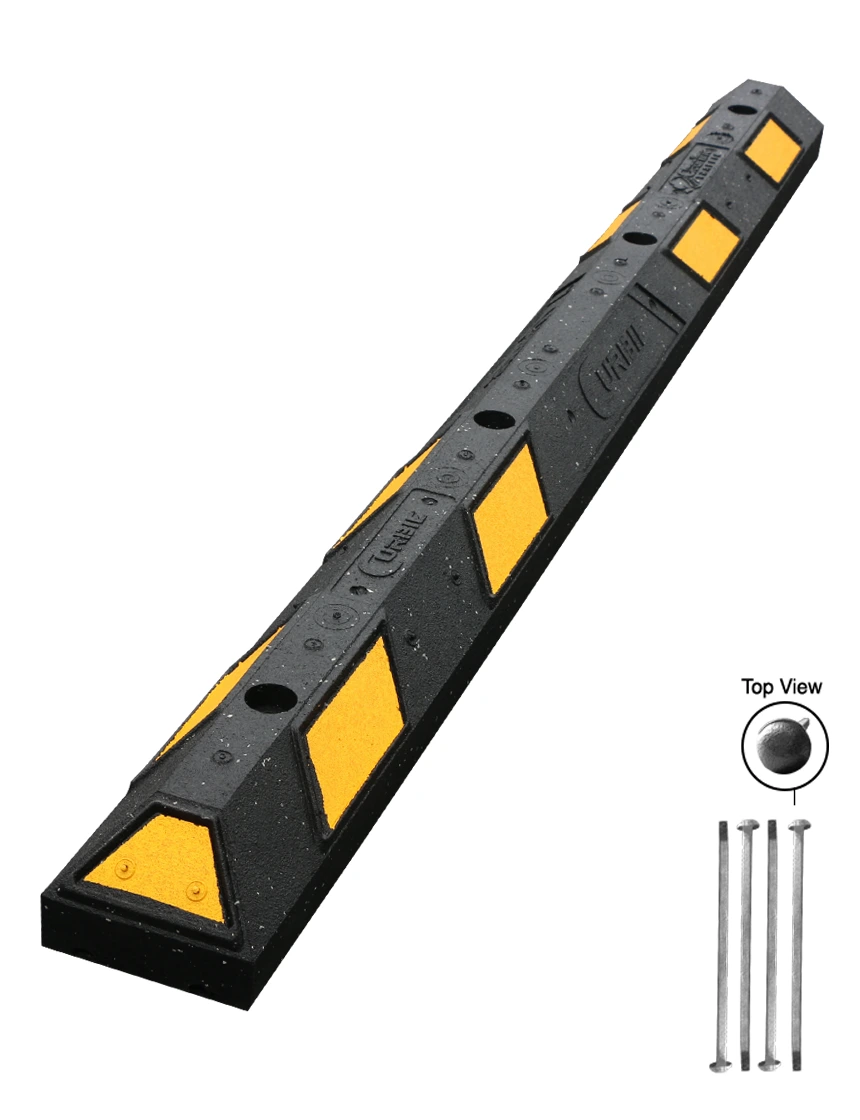
Parking Blocks
The Traffic Safety Store carries the nation’s largest in-stock selection of parking blocks — also known as wheel stops, car stops, and parking curbs. Choose from durable recycled rubber or recycled plastic parking blocks in 6 ft, 4 ft, 3 ft, and truck-length options, with hardware for asphalt or concrete included. Designed for commercial parking lots, schools, multi-family properties, and industrial facilities, our parking blocks provide long-lasting protection and help keep every parking space safe and clearly organized.
- On Sale
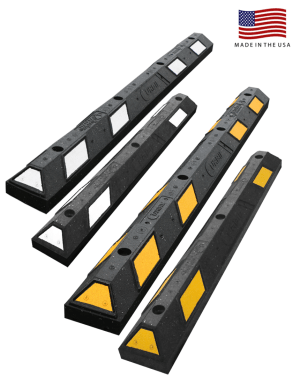 More Info
More InfoClearline Rubber Parking Blocks
Two lengths - 6' & 4' x 4" Tall
Two colors to choose from
Black/Yellow or Black/White 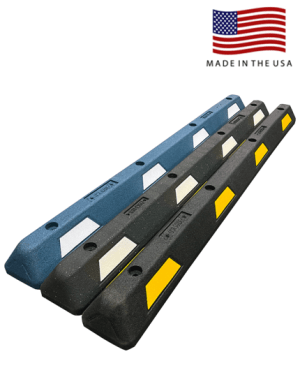 More Info
More InfoRubber Parking Block by Plasticade
6' Recycled Rubber Parking Block
Choose Yellow or White Reflectors
5 Mounting Hardware Choices- On Sale
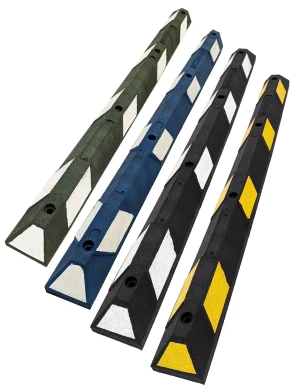 More Info
More InfoGUMA Rubber Parking Blocks
Four colors to choose from
Only EV Green Rubber Block - On Sale
 More Info
More InfoRecycled Plastic Commercial Blocks
Three Lengths - 6', 4' & 3'
Seven (7) Colors - On Sale
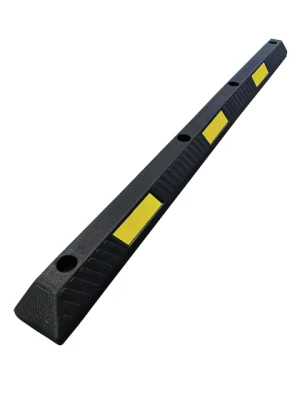 More Info
More Info6' Low-Profile Rubber Parking Blocks
70" long by 3 1/2" Tall
- Made in USA
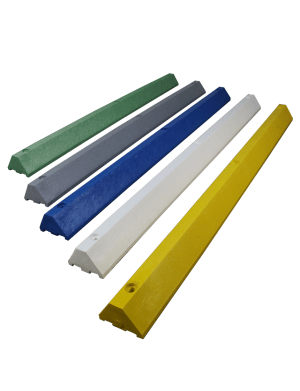 More Info
More InfoIndustrial Plastic Parking Blocks
6' Plastic Blocks
Four Color Choices - On Sale
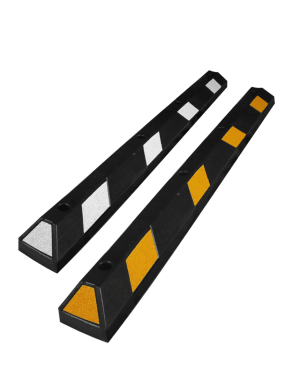 More Info
More InfoTraffic Safety Store Rubber Parking Blocks
6' (72") Long x 4" Tall
Two Colors to choose from! - Made in USA
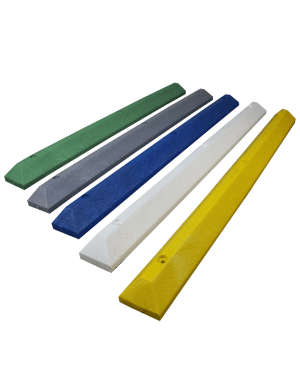 More Info
More InfoHeavy-Duty Solid Plastic Blocks
6' & 4' Lengths
Heavy Solid Plastic - Heavy Duty
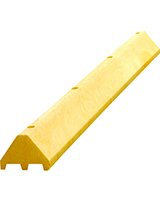 More Info
More Info8' Heavy-Duty Plastic Truck Blocks
8' Long, Solid
Made For Trucks - Made in USA
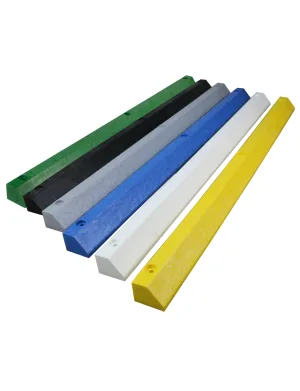 More Info
More InfoEconomy Solid Plastic Blocks
6' Solid Plastic
Asymmetric Shape 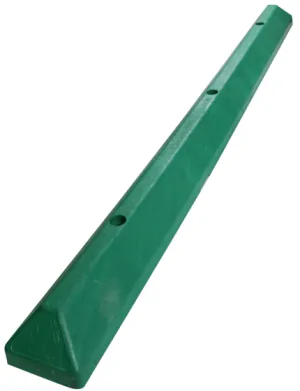 More Info
More InfoElectric Vehicle Parking Blocks
Electric Vehicle Green
6' Length, Recycled Plastic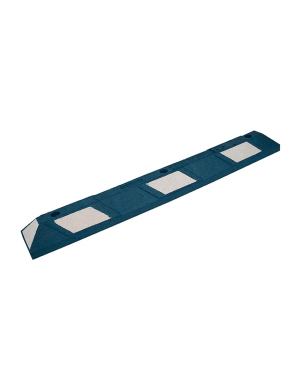 More Info
More InfoPark-It Recycled Rubber Parking Blocks
4' Length
Handicapped Parking Blue
Recycled Rubber
On Sale Products
Explore Our Parking Blocks and Wheel Stops
We offer the largest in-stock selection of parking blocks and wheel stops for sale in multiple materials, lengths, and colors—ensuring you’ll find the perfect fit for your parking lot, garage, or property. Crafted from durable recycled rubber and recycled plastic, our parking blocks offer superior performance, easier installation, and longer service life than traditional concrete options. They resist cracking, chipping, and weathering—making them a smart, low-maintenance solution for commercial parking lots, industrial facilities, schools, and multi-family properties. Below is a quick overview of our most popular options:
- Clearline Rubber Parking Blocks – Available in 6' and 4', lightweight and flexible, great for uneven pavement.
- Rubber Parking Blocks by Plasticade – 6' lengths, durable construction, ideal for older or cracked asphalt surfaces.
- Recycled Plastic Commercial Blocks – Multiple lengths and six color options, designed for high-traffic commercial lots.
- Traffic Safety Store Rubber Parking Blocks – Black/yellow and black/white options, long-lasting and easy to install.
- GUMA Rubber Parking Blocks – Four color options, including EV Green for electric vehicle charging spaces.
- 6' Low-Profile Rubber Parking Blocks – A lower height profile for minimal vehicle obstruction and a clean appearance.
- 8' Heavy-Duty Plastic Truck Blocks – Oversized wheel stops built for tractor-trailers, fleet yards, and commercial truck lots.
- Industrial Plastic Parking Blocks – High-visibility colors and rugged construction for demanding industrial environments.
- Heavy-Duty Solid Plastic Blocks – USA-made, available in multiple lengths, engineered for constant daily vehicle traffic.
- Economy Solid Plastic Blocks – Budget-friendly, lightweight, and molded with an asymmetric design to reduce cost.
- Electric Vehicle Parking Blocks – Eco-friendly recycled-plastic blocks in EV Green—perfect for EV charging stations.
- Park-It Recycled Rubber Parking Blocks – 4' lengths made from premium recycled rubber, excellent for small lots or tight spaces.
Why Choose Recycled Plastic and Rubber Parking Blocks?
- Durability: Will not crack, split, crumble, or spall like concrete blocks.
- Easy Installation: Lightweight enough to install by hand—no heavy machinery required.
- Flexibility: Rubber options absorb impact and conform to uneven pavement.
- Low Maintenance: UV-stable pigments resist fading—no painting or sealing needed.
- Eco-Friendly: Made from recycled materials, supporting sustainability and LEED goals.
Product Selection Guide
1. Identify Your Parking Lot Type
- Paved Commercial Lots: Recycled plastic commercial blocks.
- Gravel or Aged Pavement: Recycled rubber parking blocks that flex to surface irregularities.
- Standard and Large-Scale Lots: industrial-grade blocks.
- Commercial Truck or Fleet Yards: Heavy-duty truck blocks.
- Utility, Industrial, or High-Traffic Sites: solid plastic blocks built for constant use.
2. Choose a Color
- Safety Yellow: Maximum visibility for drivers and pedestrians.
- Traditional Gray: A clean, concrete-like appearance.
- EV Green: Perfect for EV-designated parking or charging stations.
- Red: Ideal for fire lanes, restricted parking, or no-parking zones.
- Brown: Blends naturally with landscaped or park environments.
- White: Matches common parking lot striping and creates a crisp look.
- Accessibility Blue: Required for ADA-compliant accessible parking spaces.
3. Select Installation Hardware
- 12" Galvanized Steel Spikes: Best for asphalt or compacted gravel.
- 8" Lag Bolts & Anchors: Reliable for both concrete and asphalt installations.
- 5" Large Diameter TapCons (LDT): Ideal for direct concrete mounting.
- 14" Galvanized Steel Spikes: Longer spikes for asphalt, gravel, or dirt.
- 18" Galvanized Steel Spikes: Maximum depth and holding power—recommended for truck blocks.
For additional guidance on choosing the right parking blocks for your property, visit our Parking Blocks & Wheel Stops page or call our knowledgeable customer support team at 800-429-9030 for personalized recommendations.



